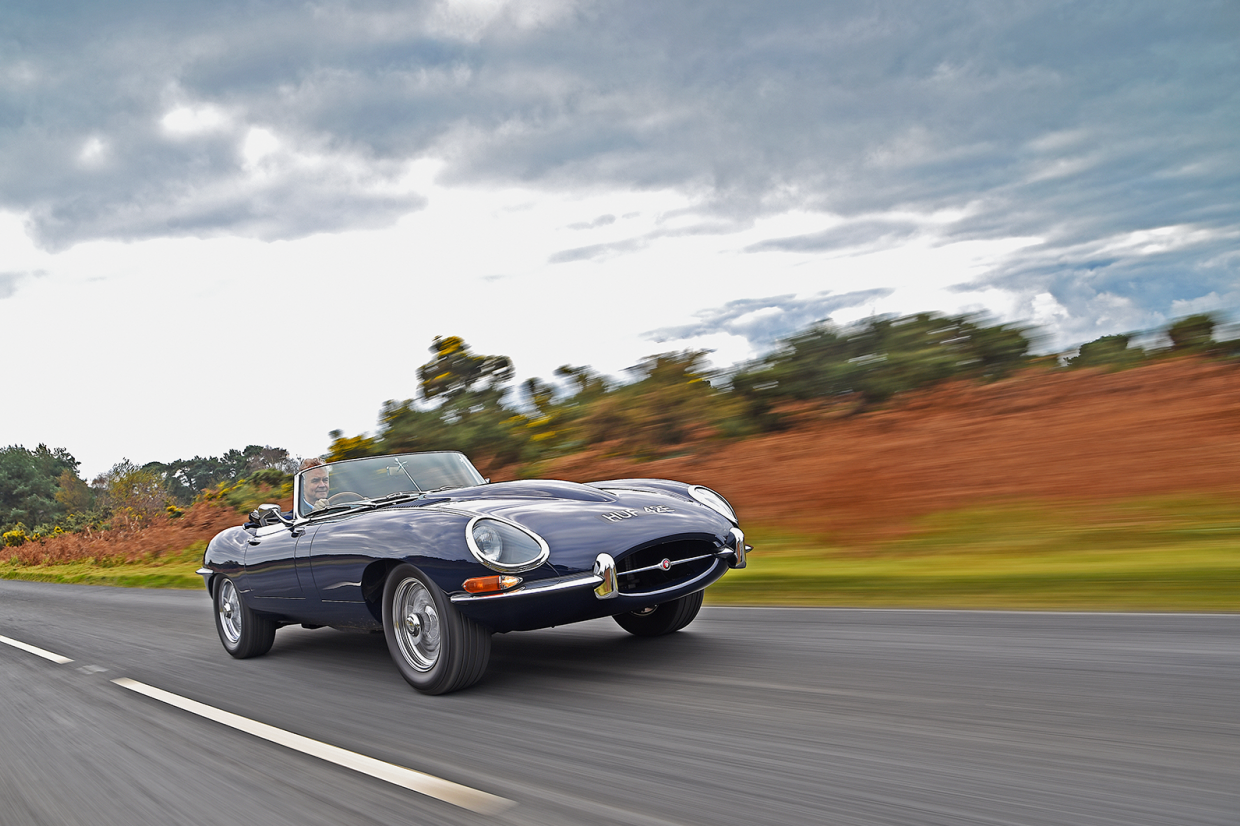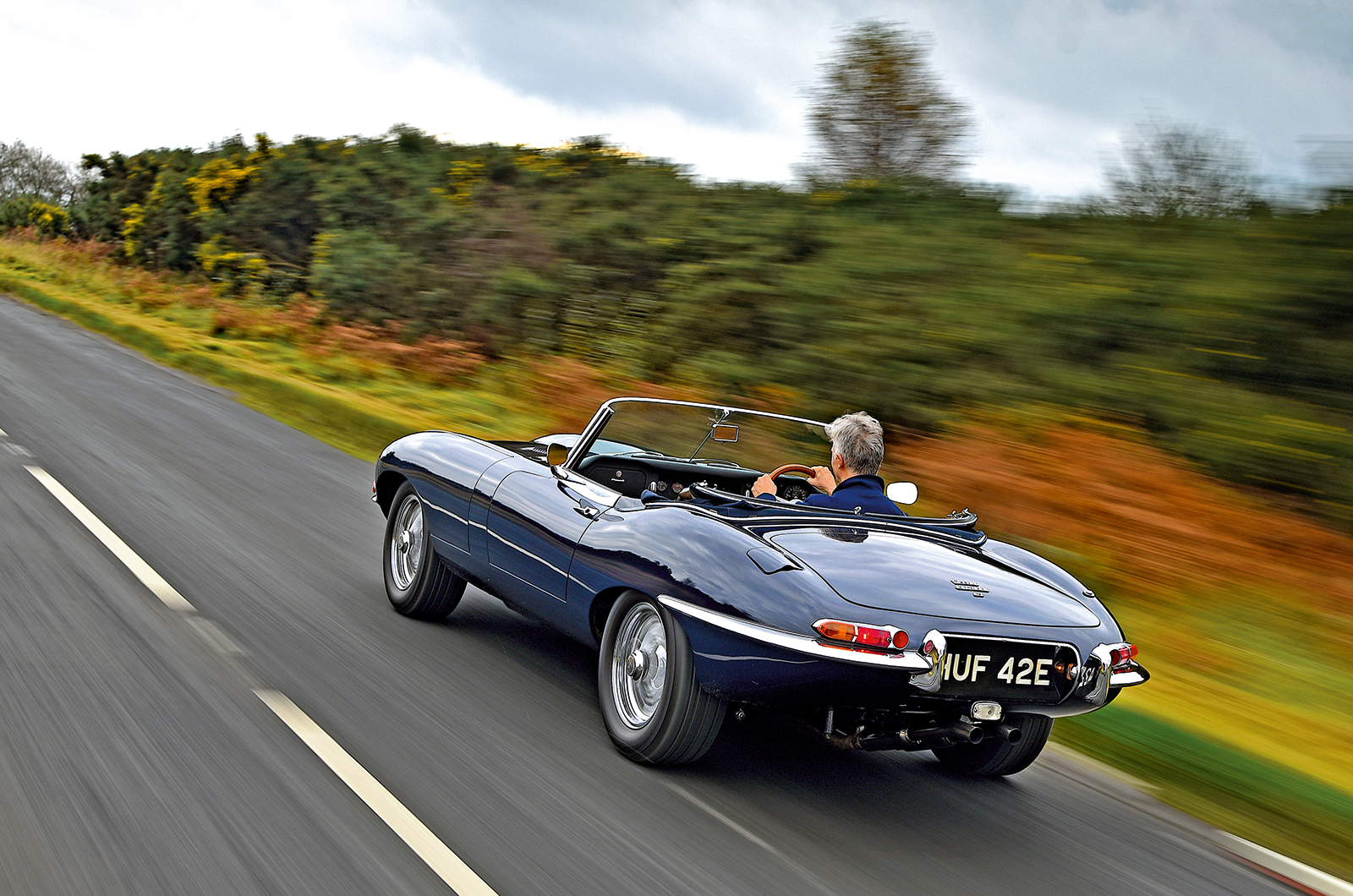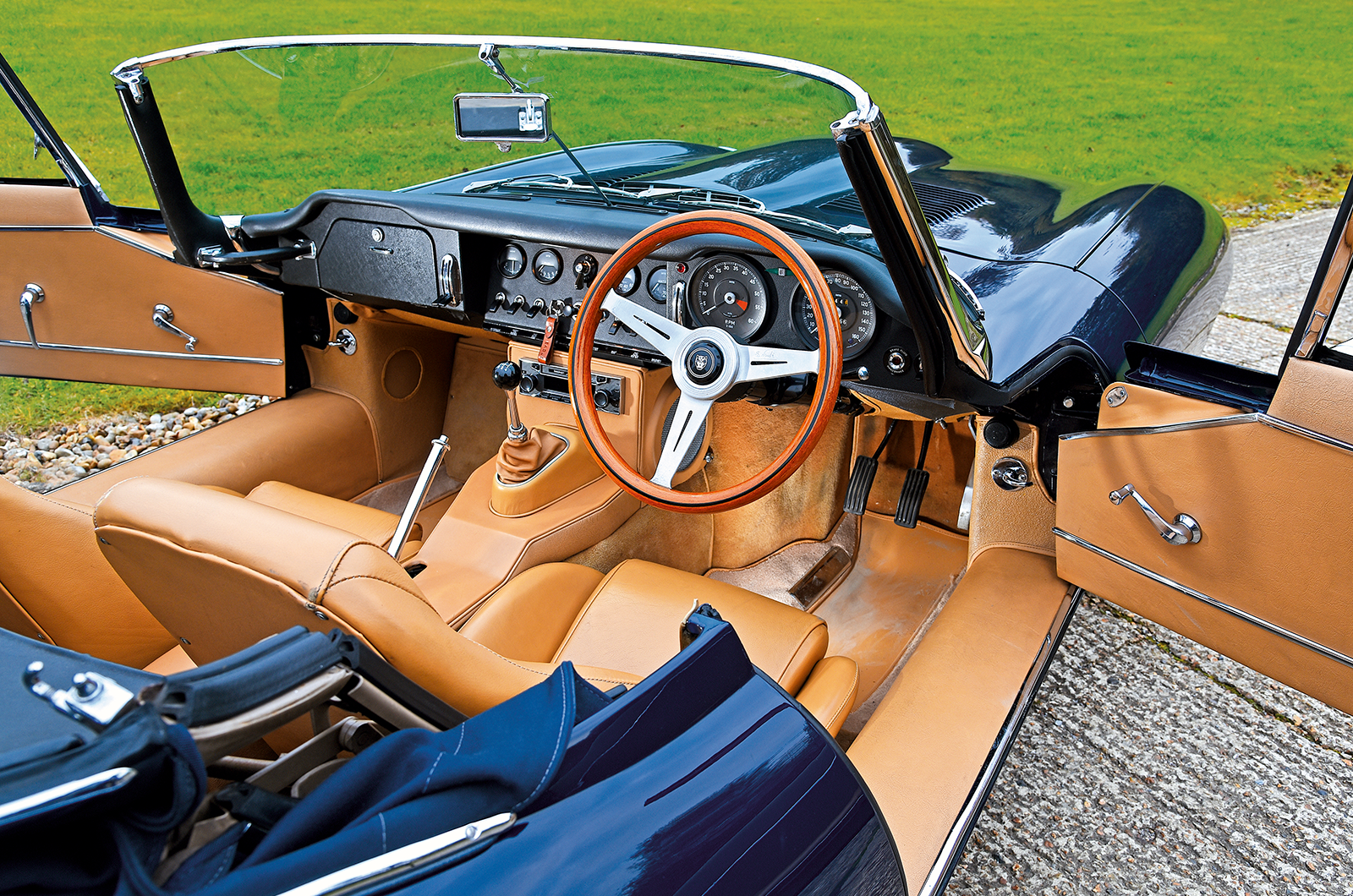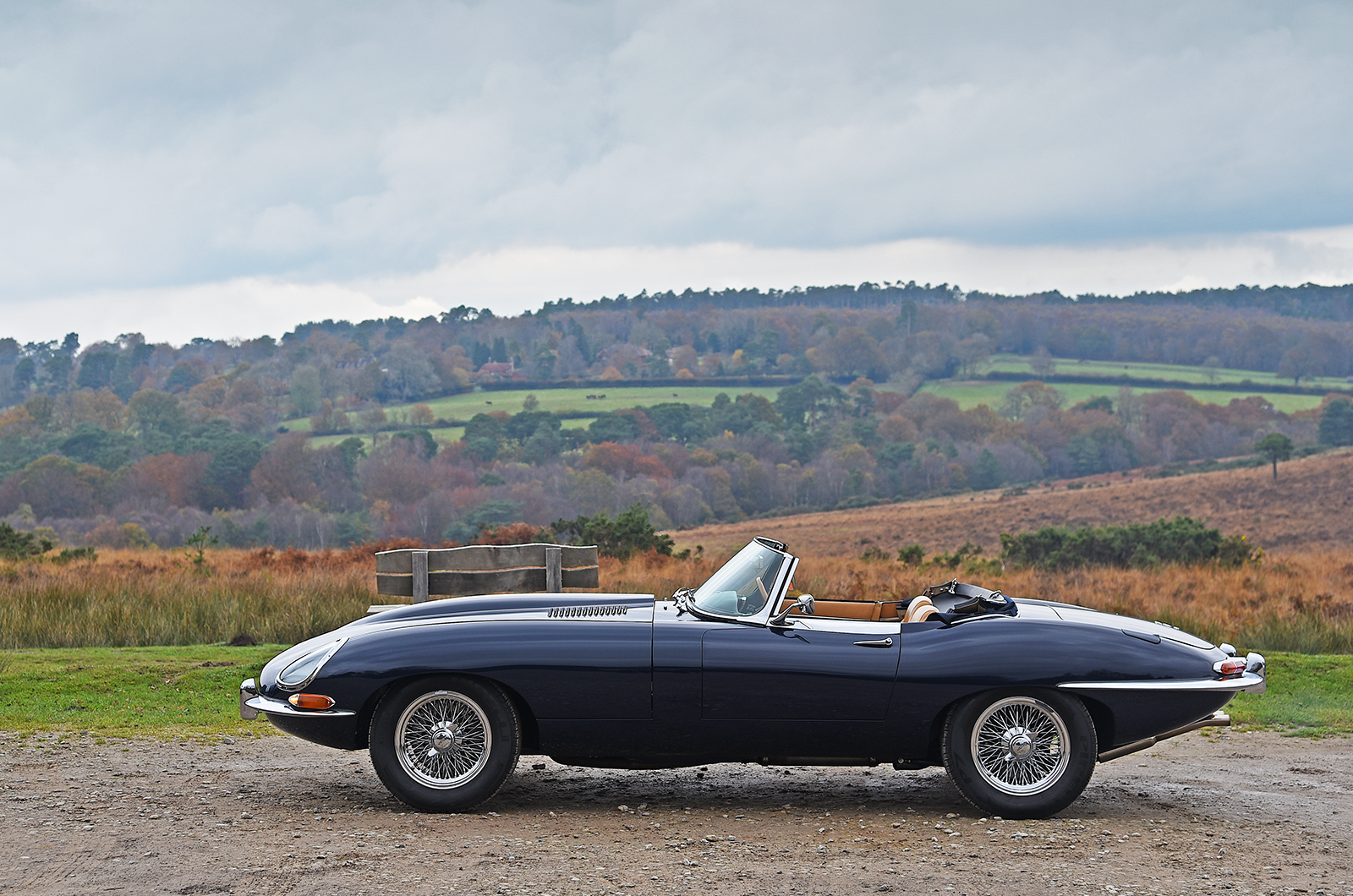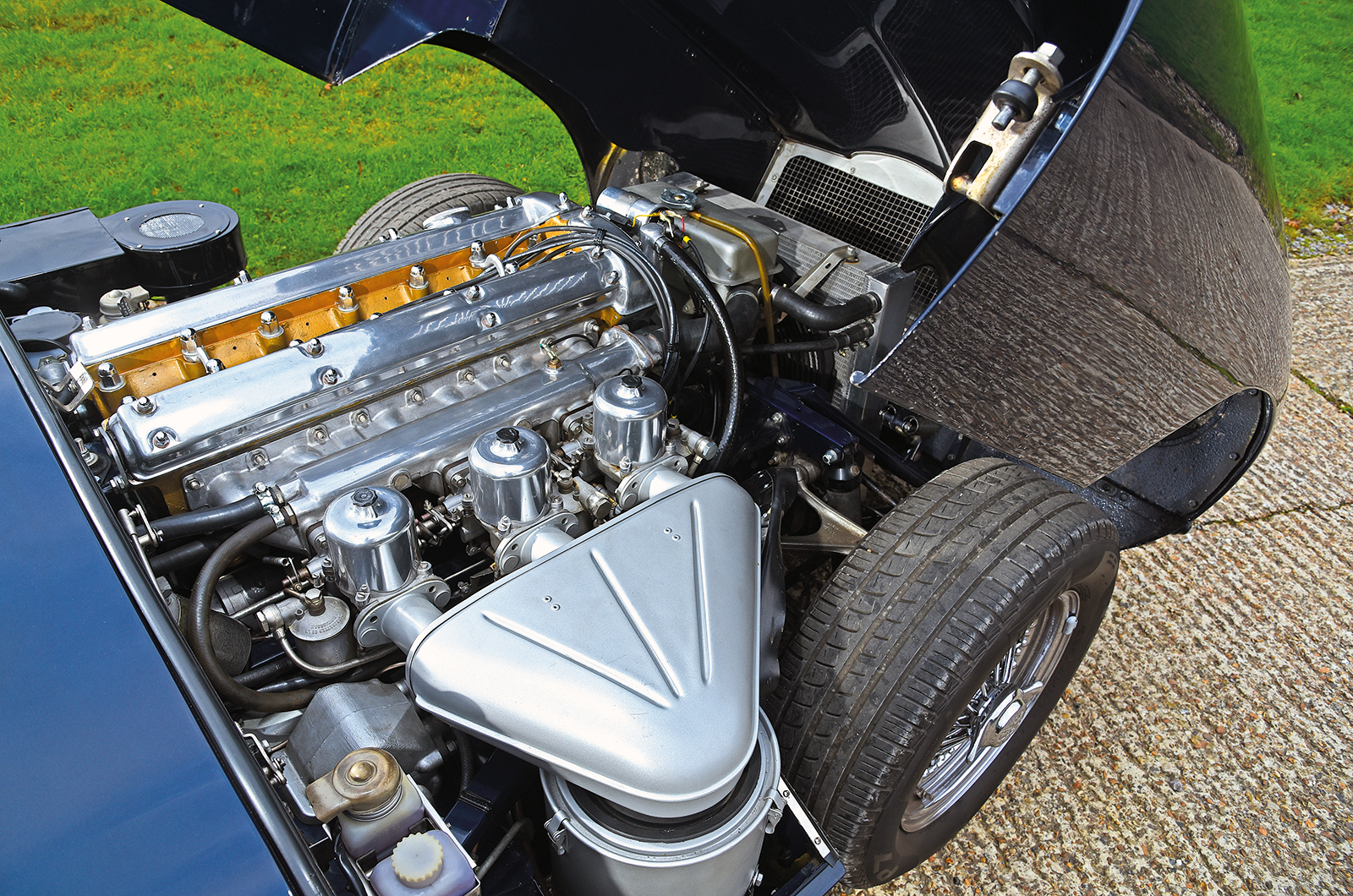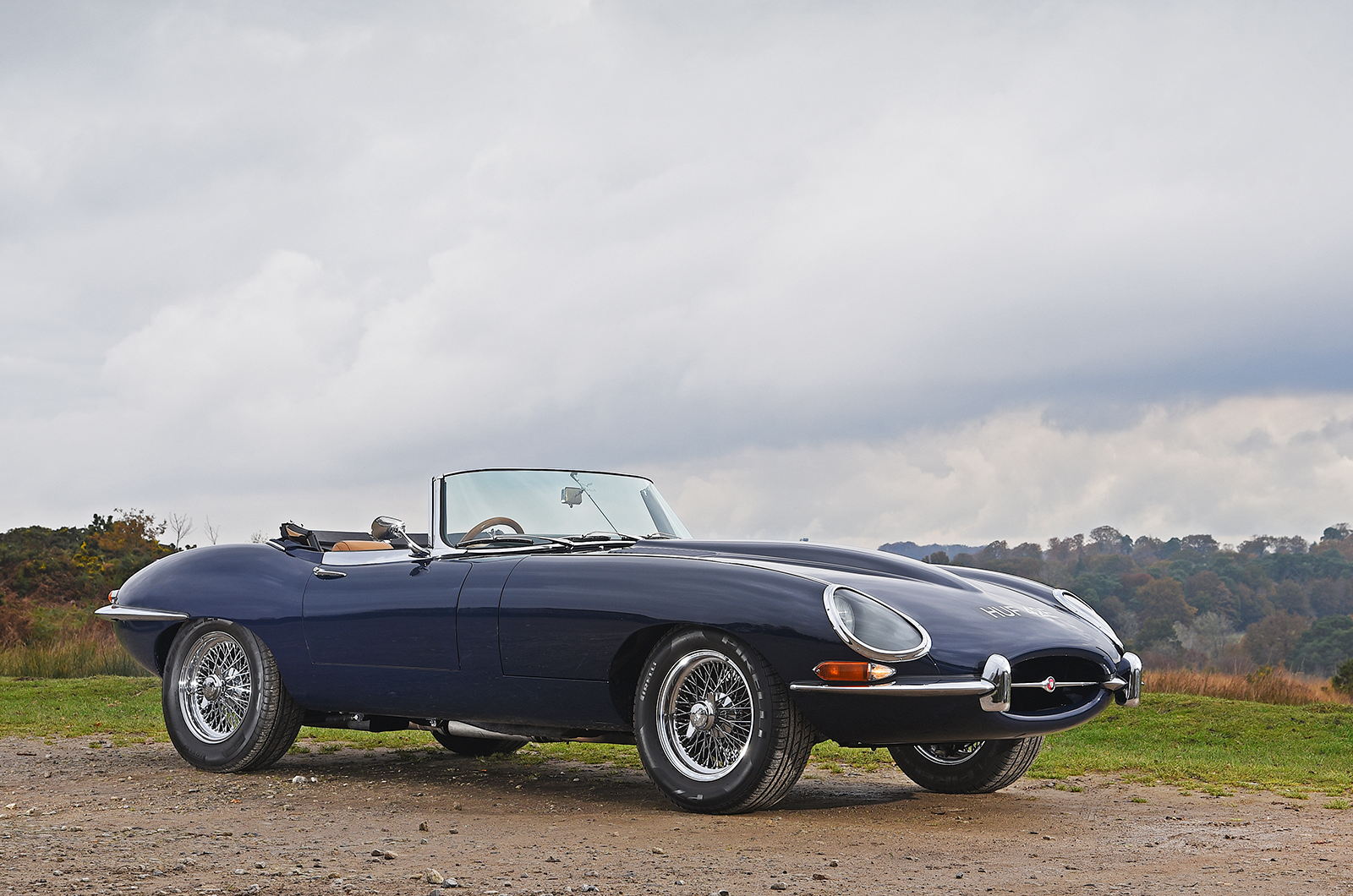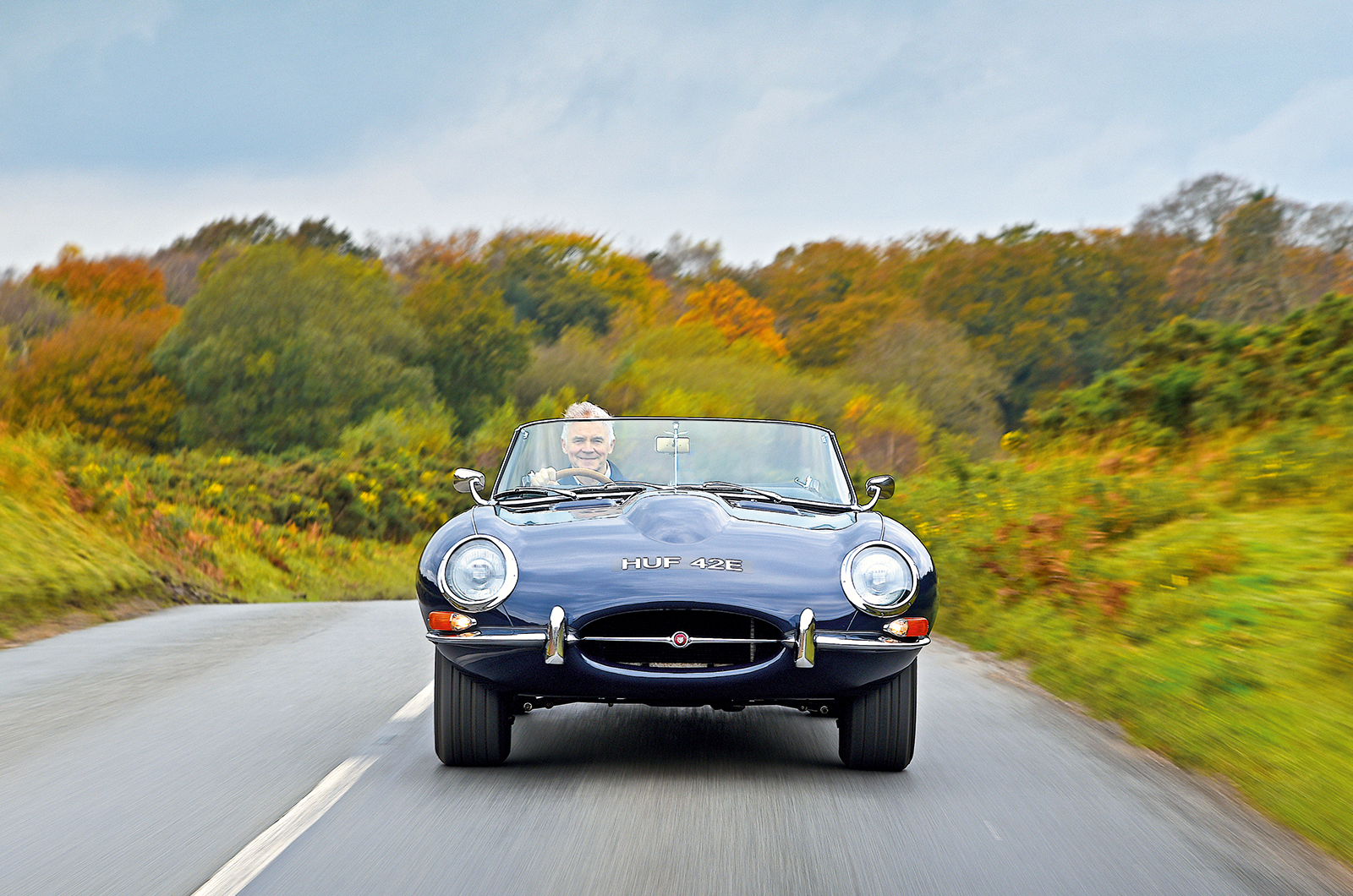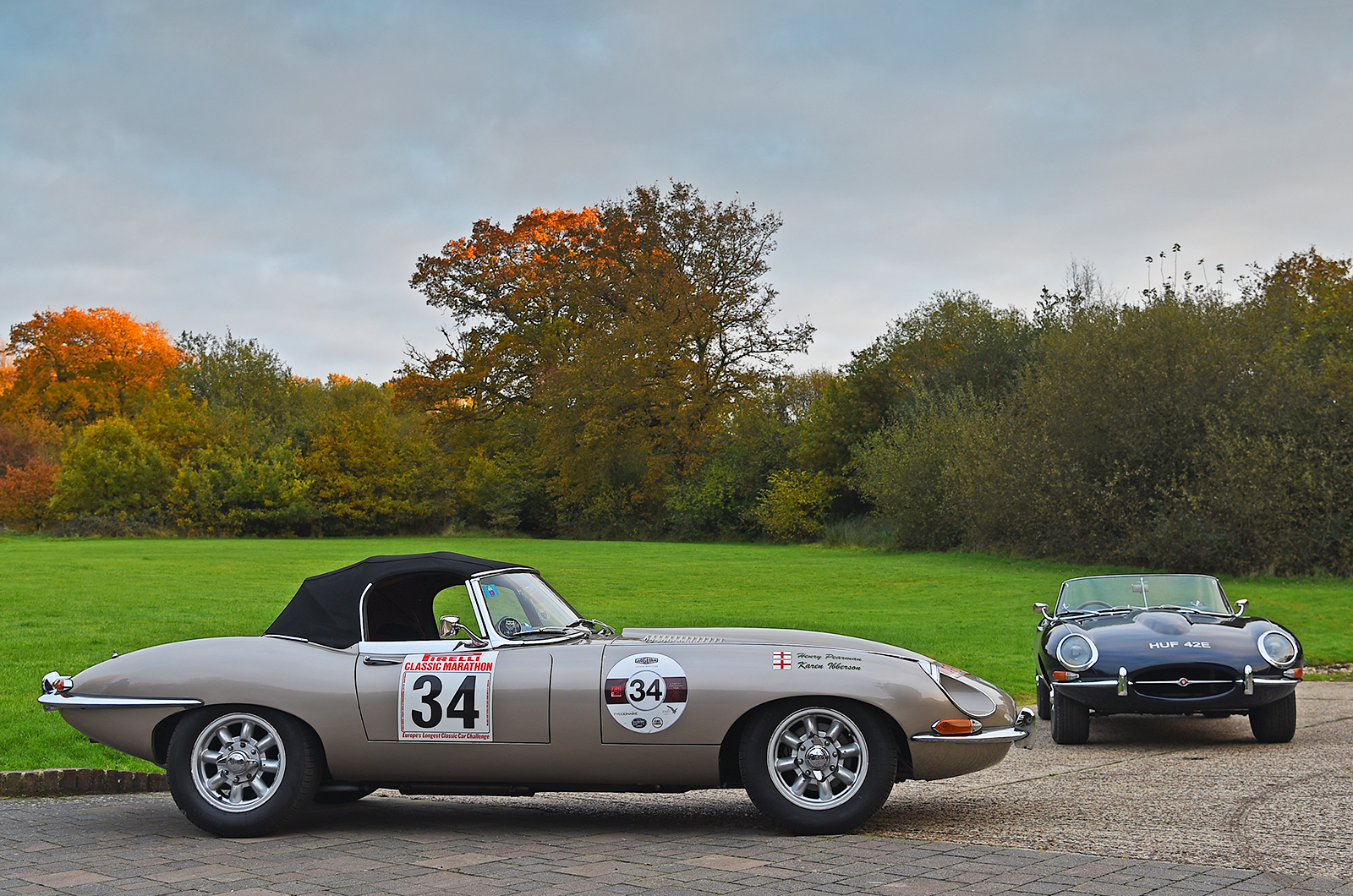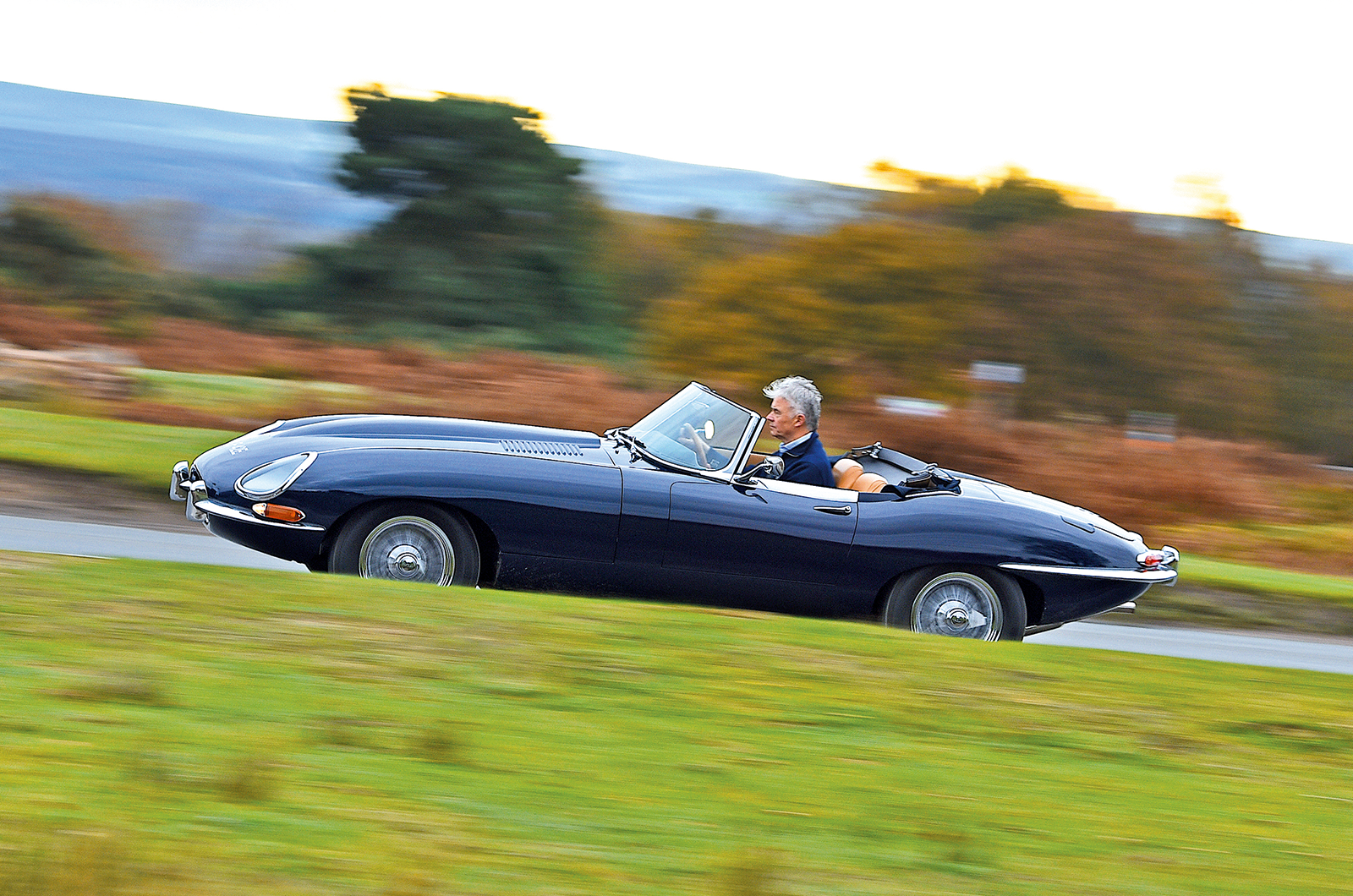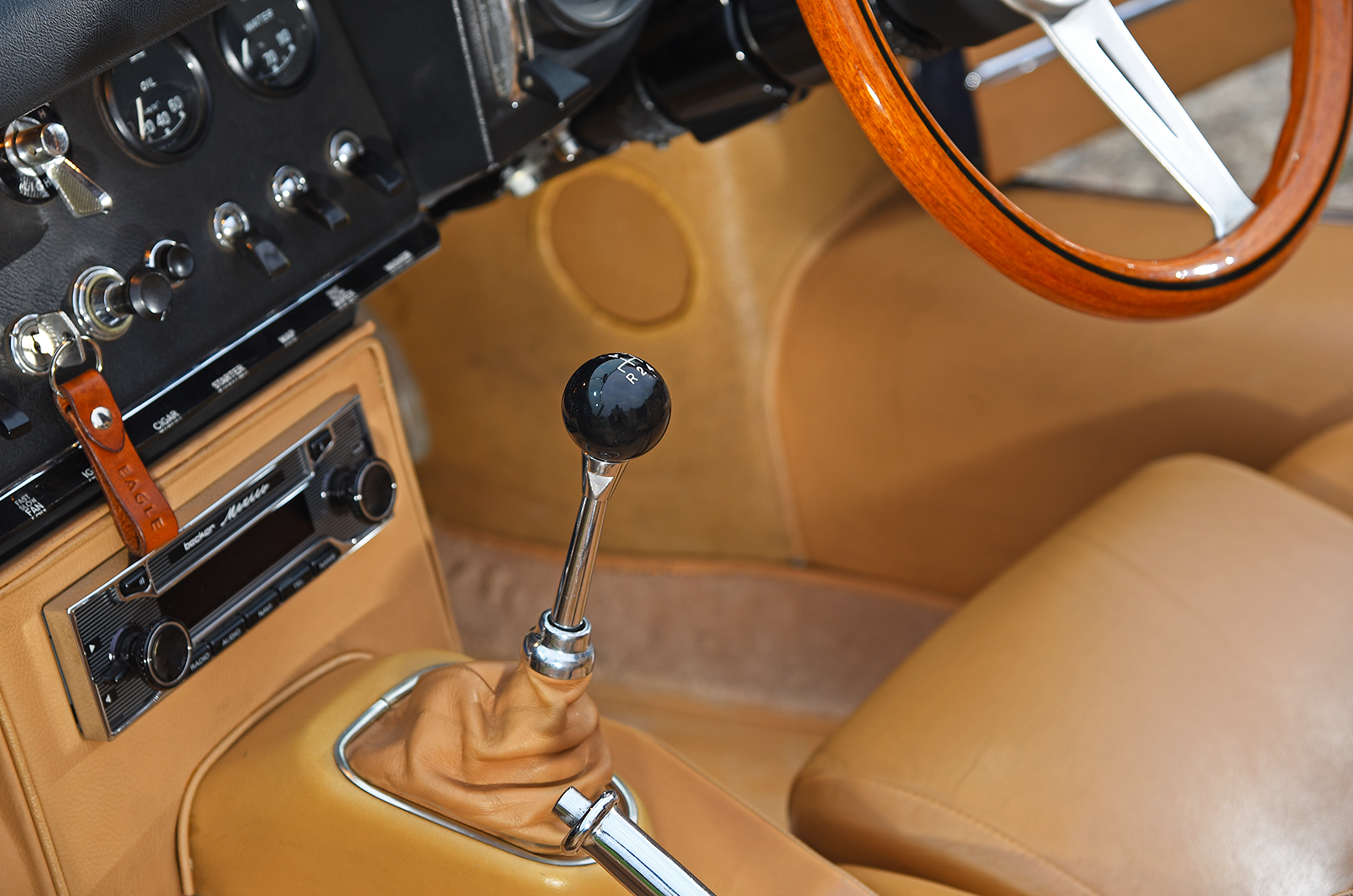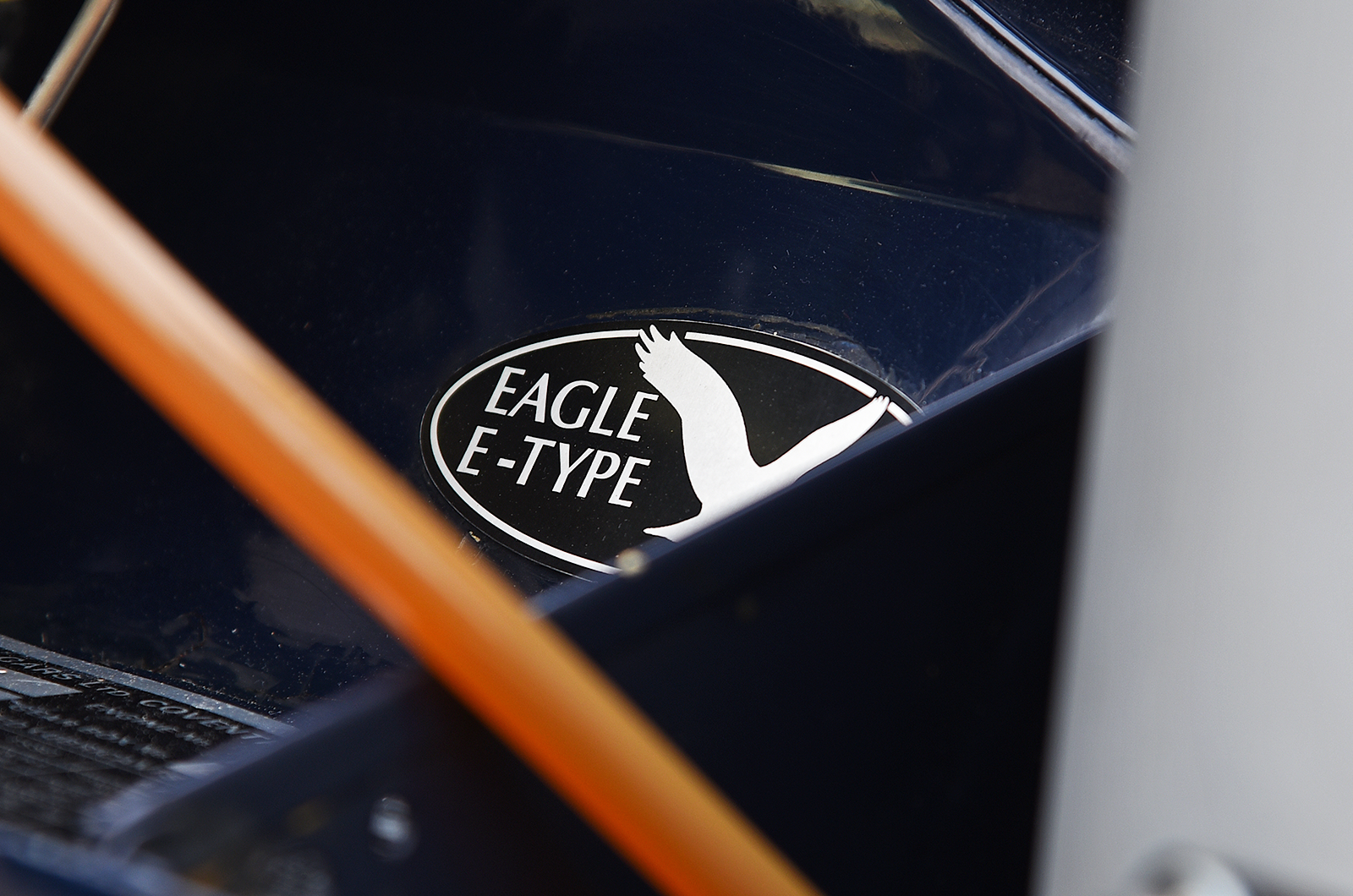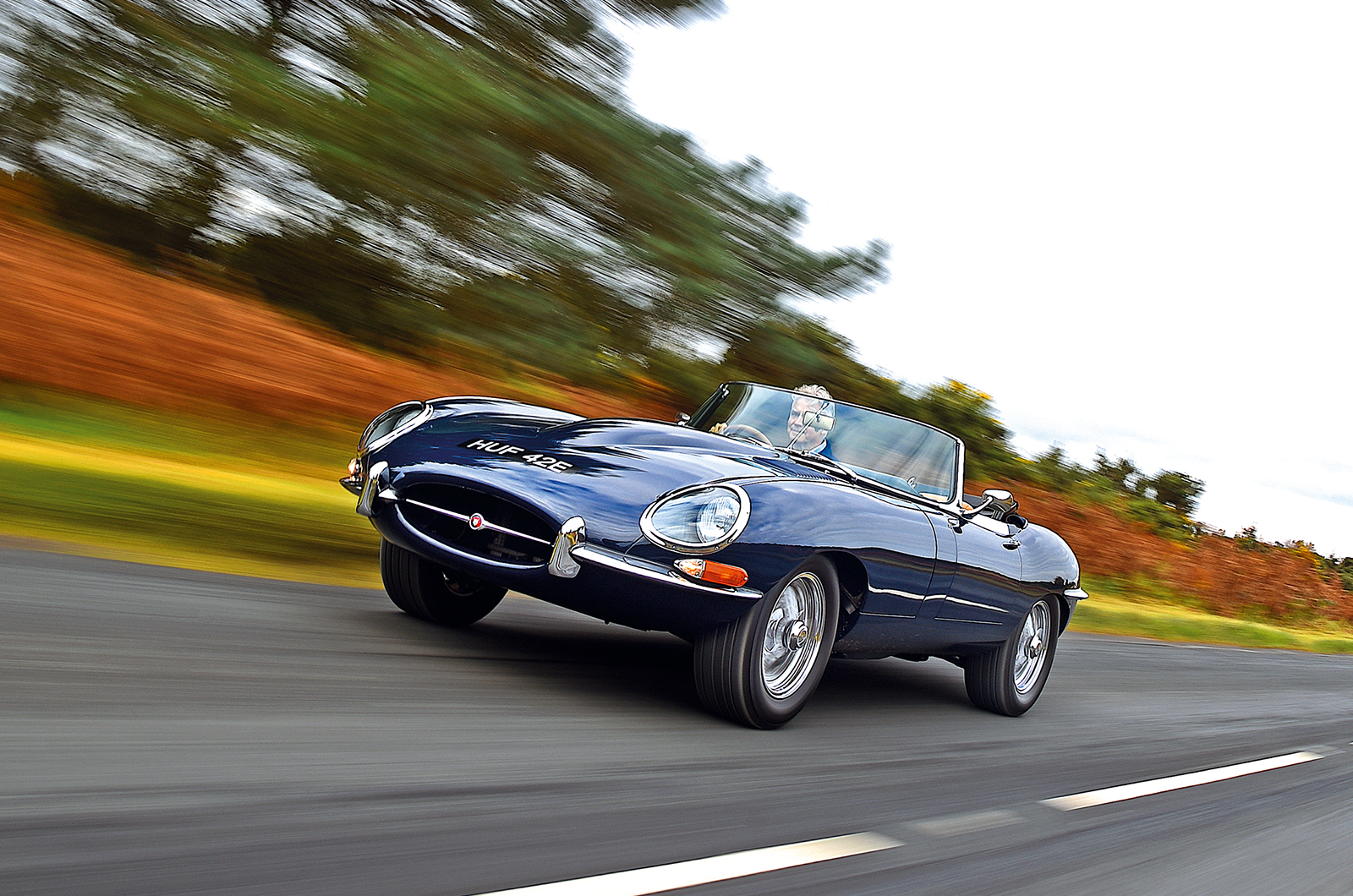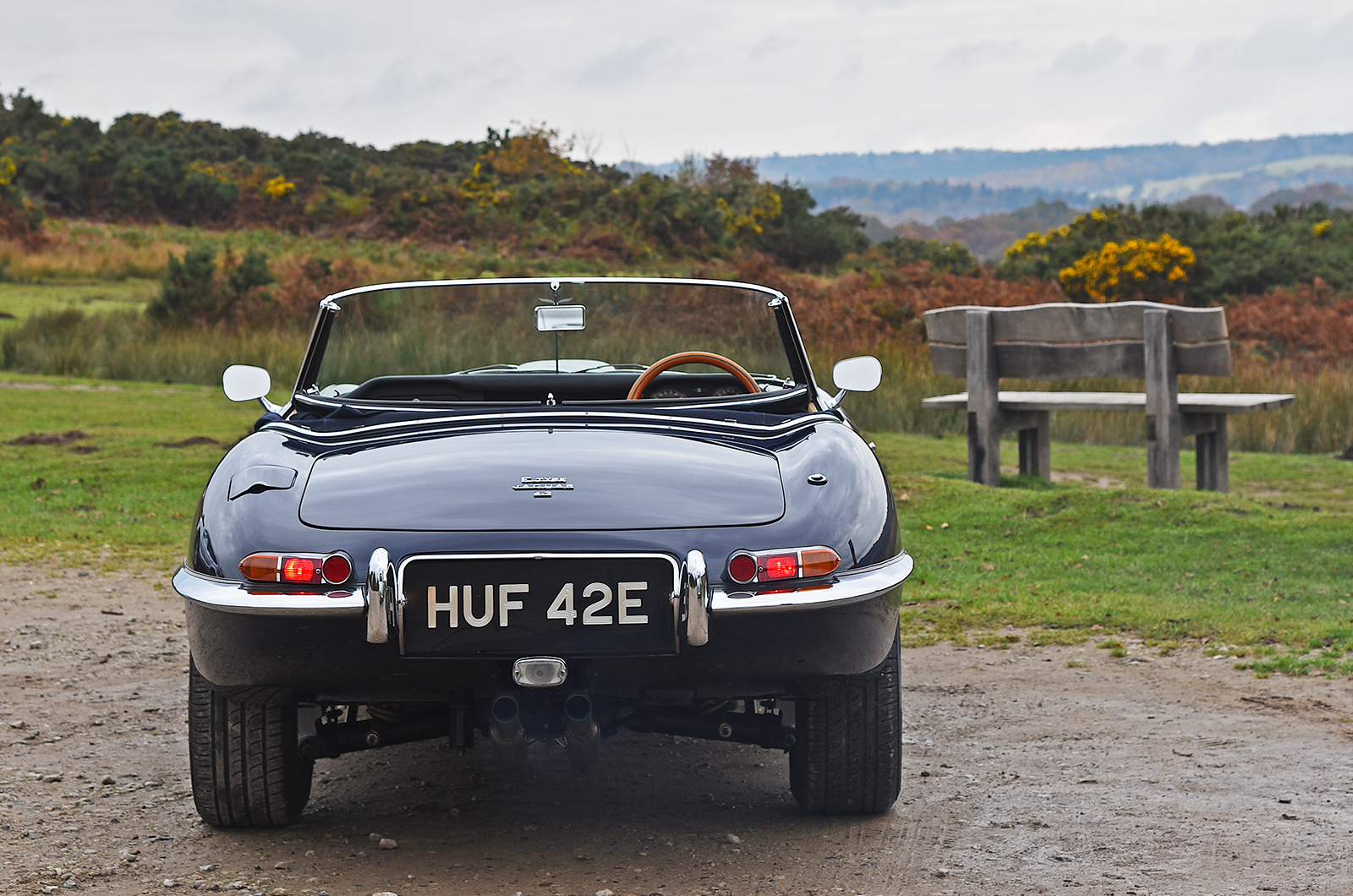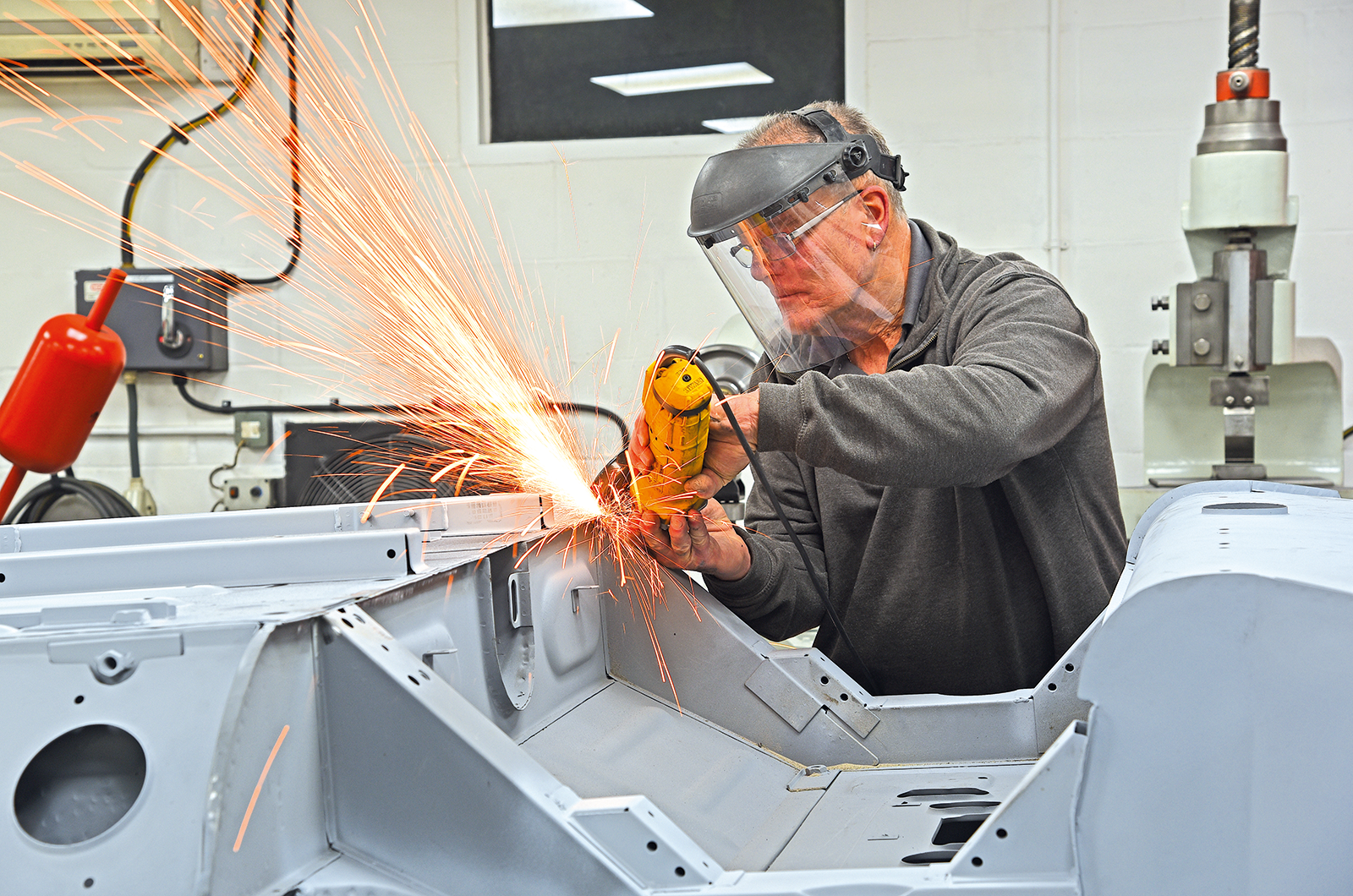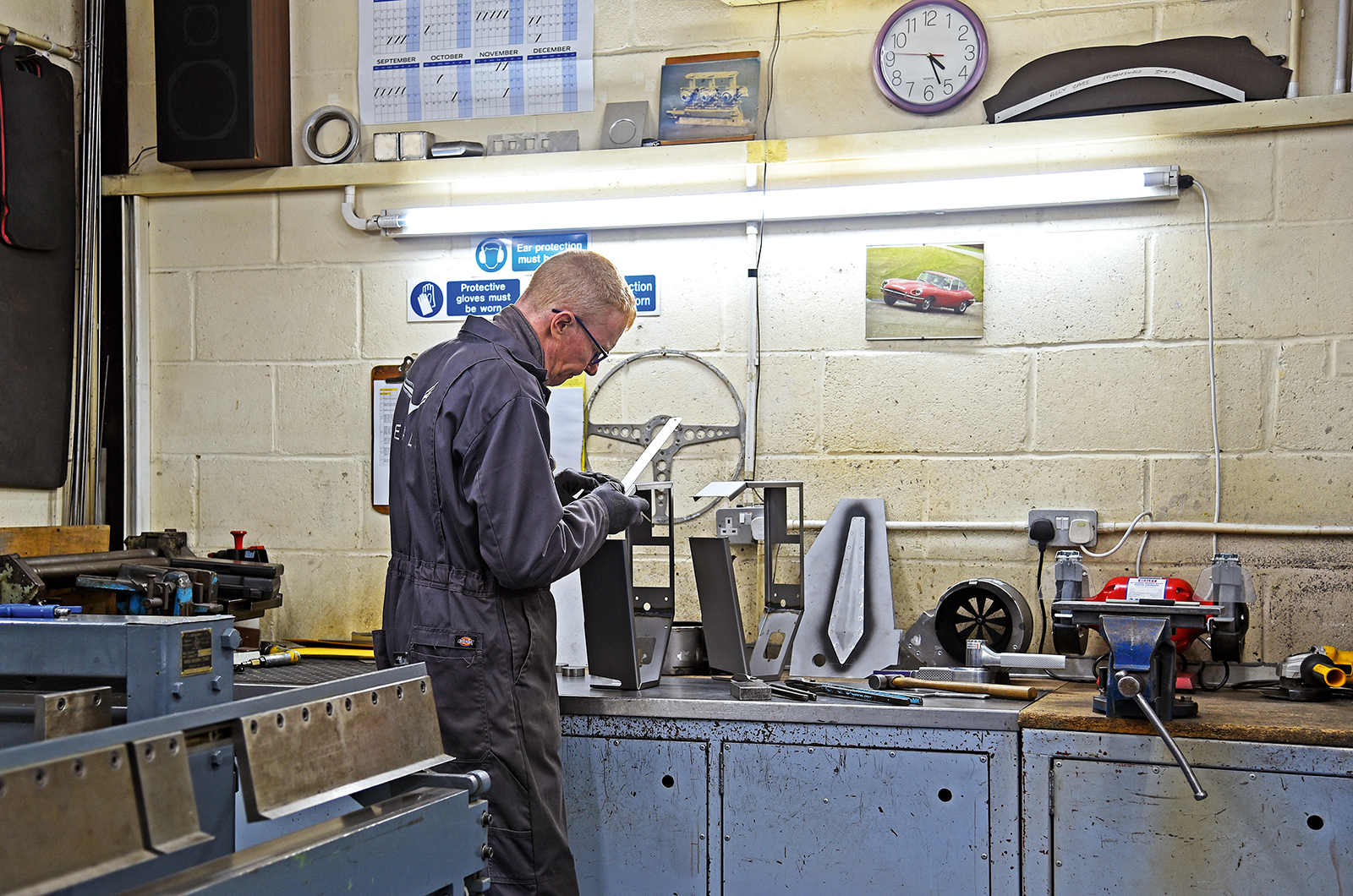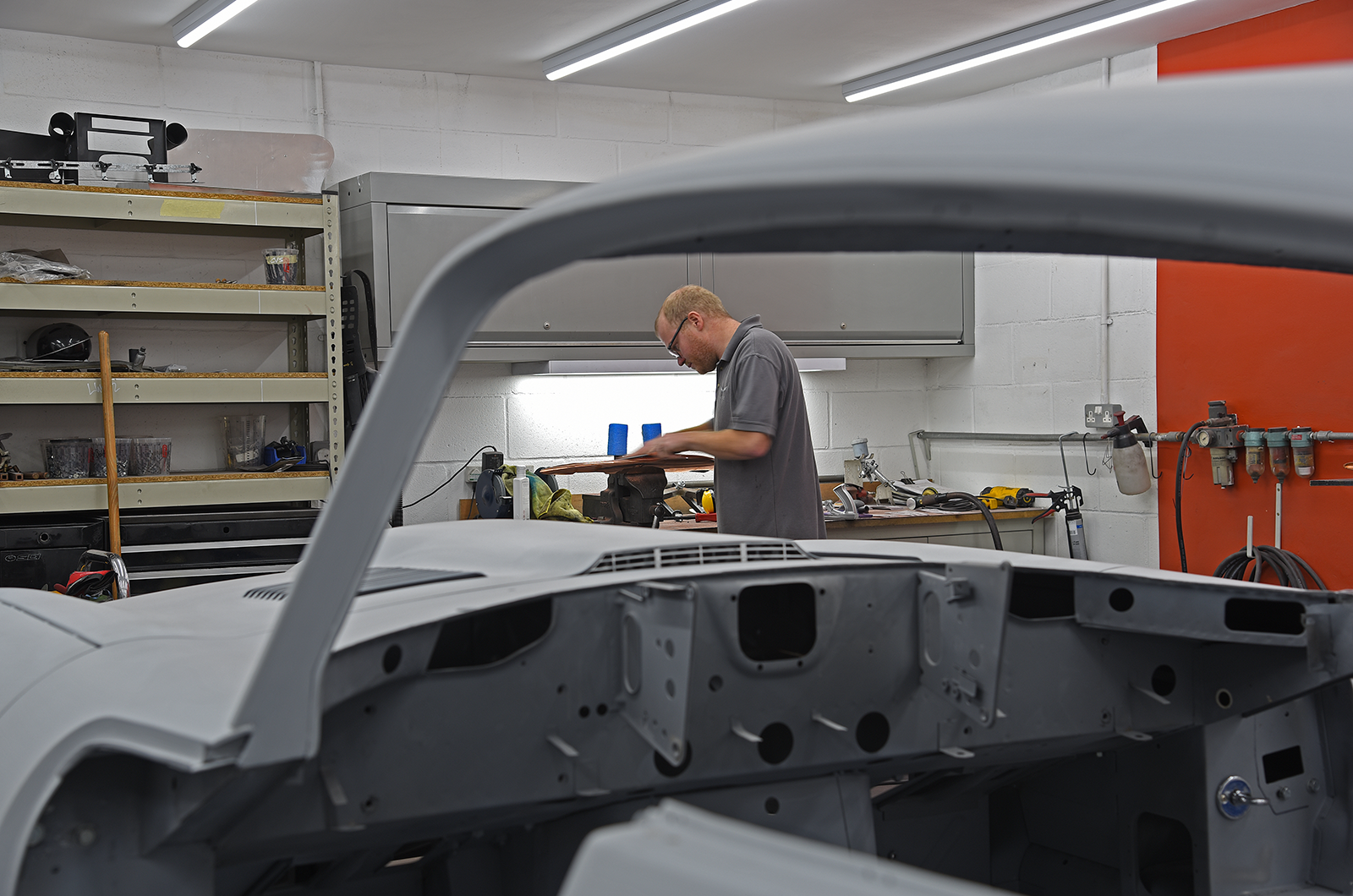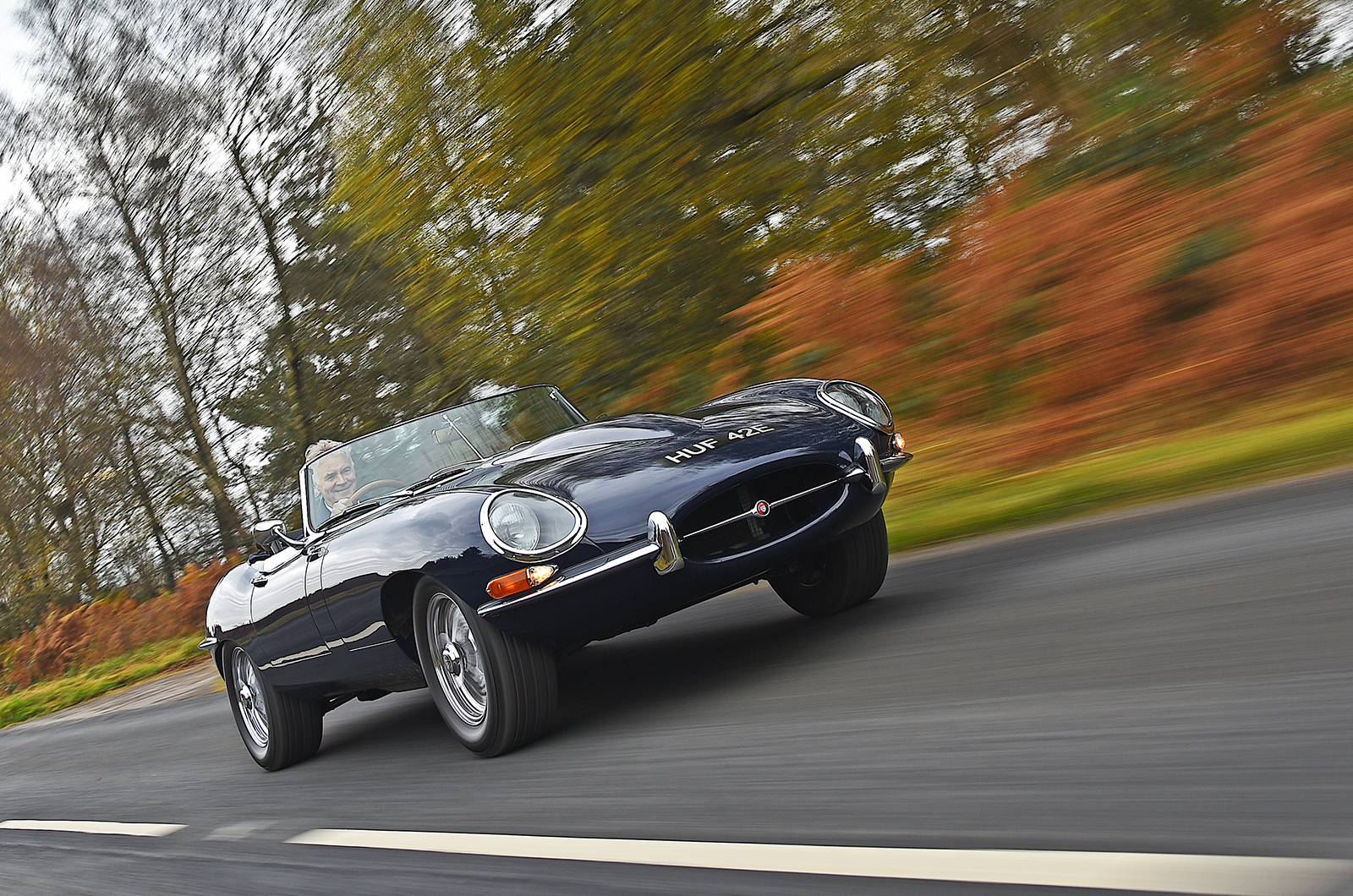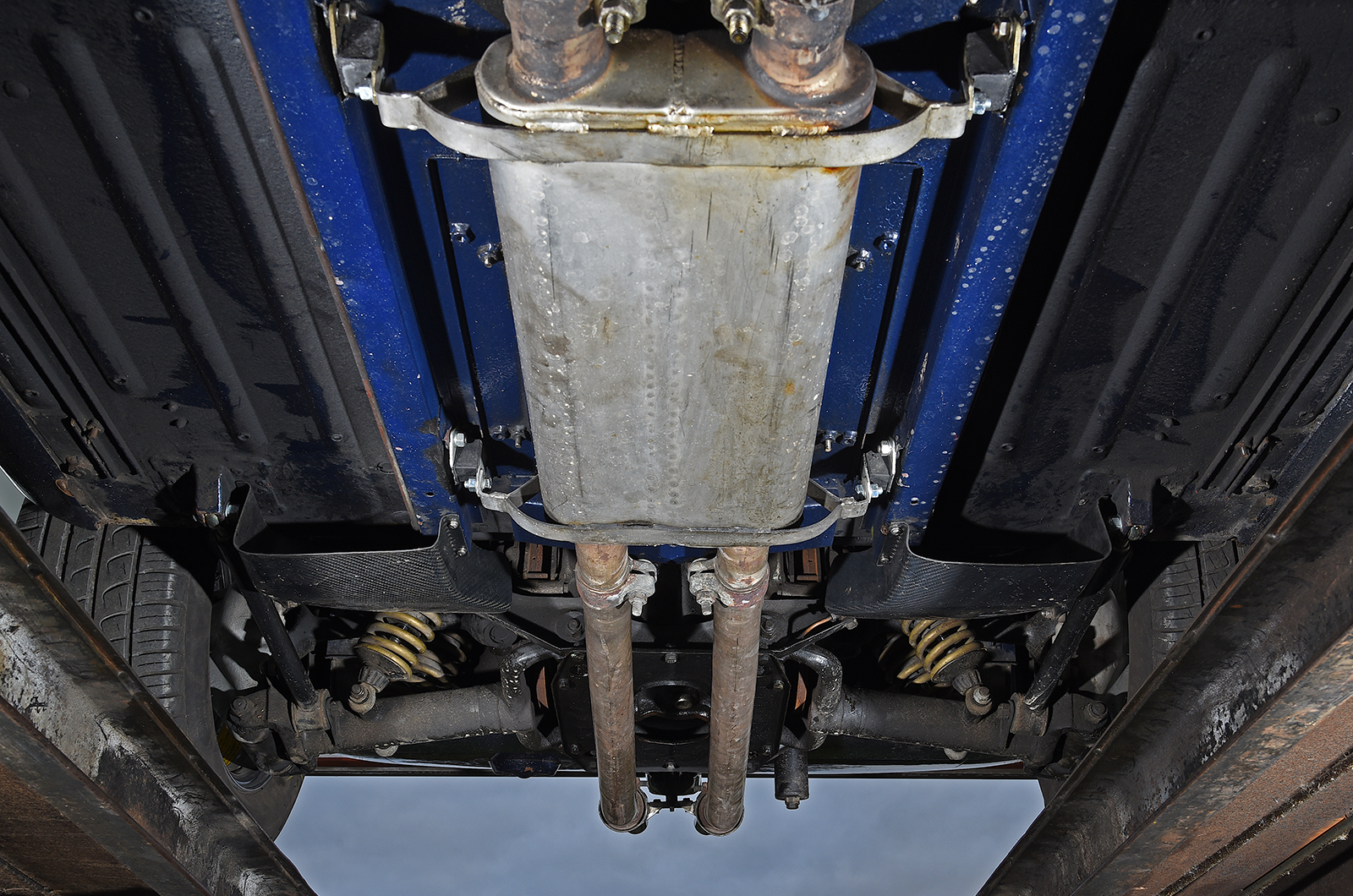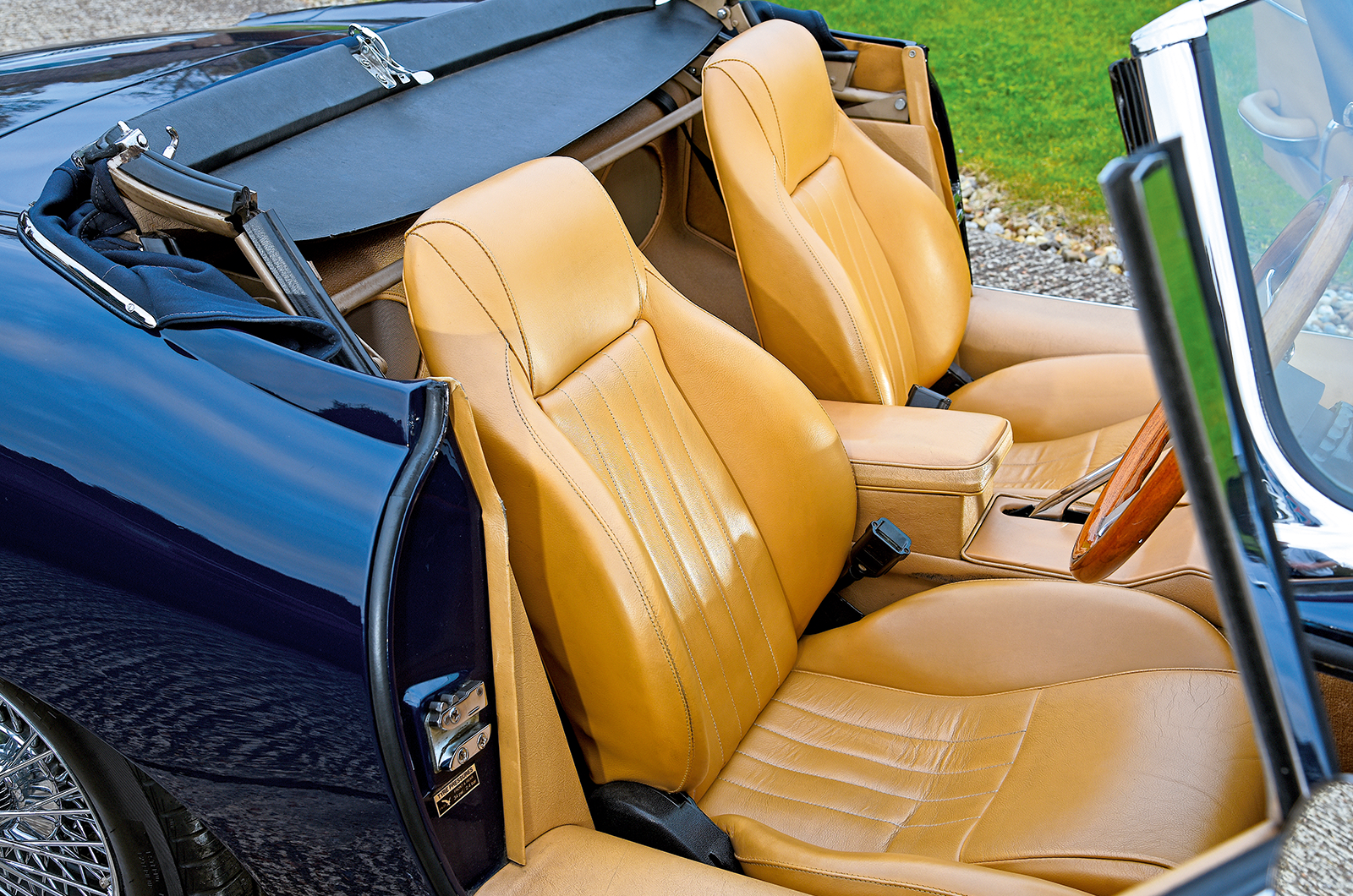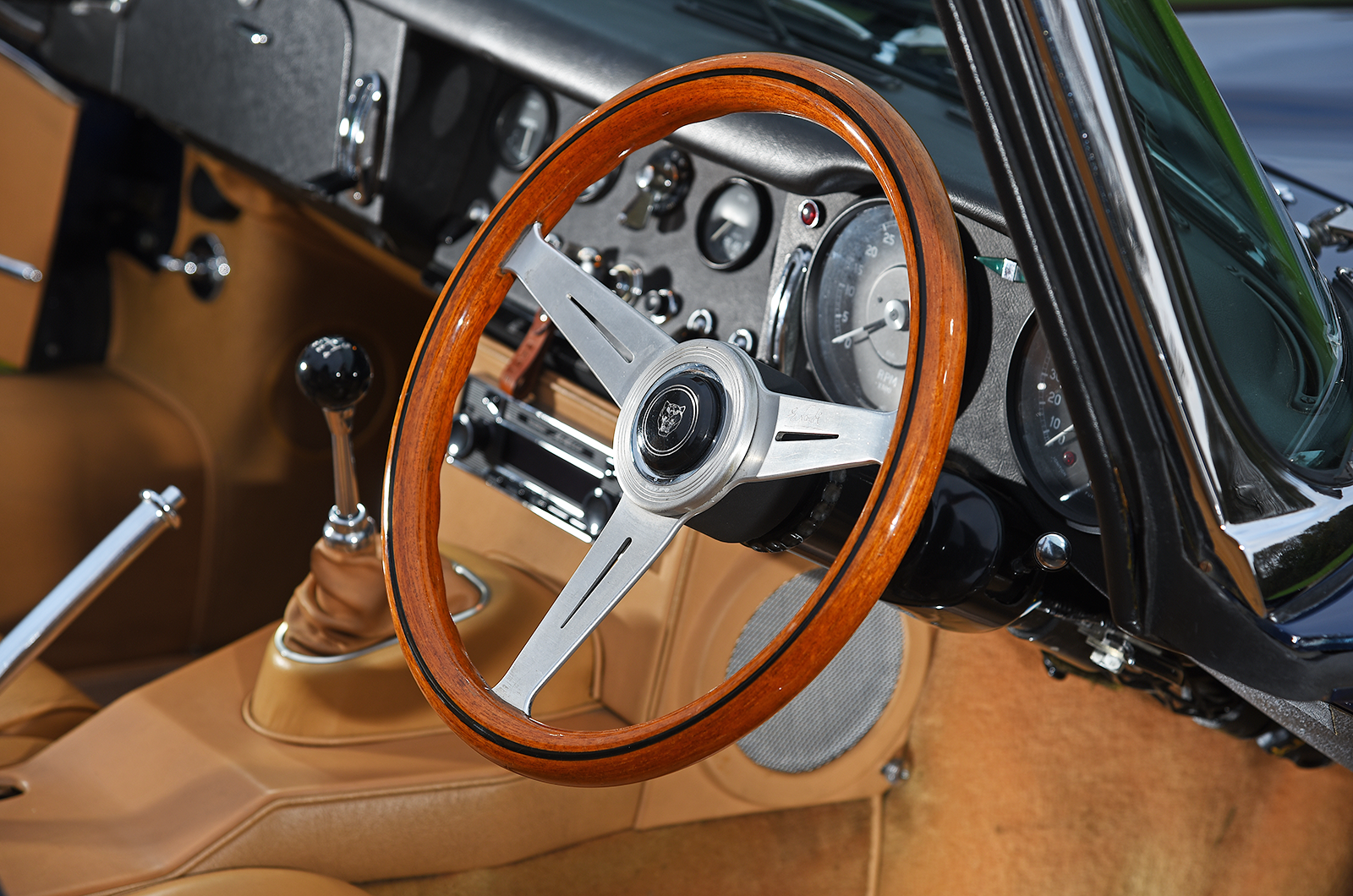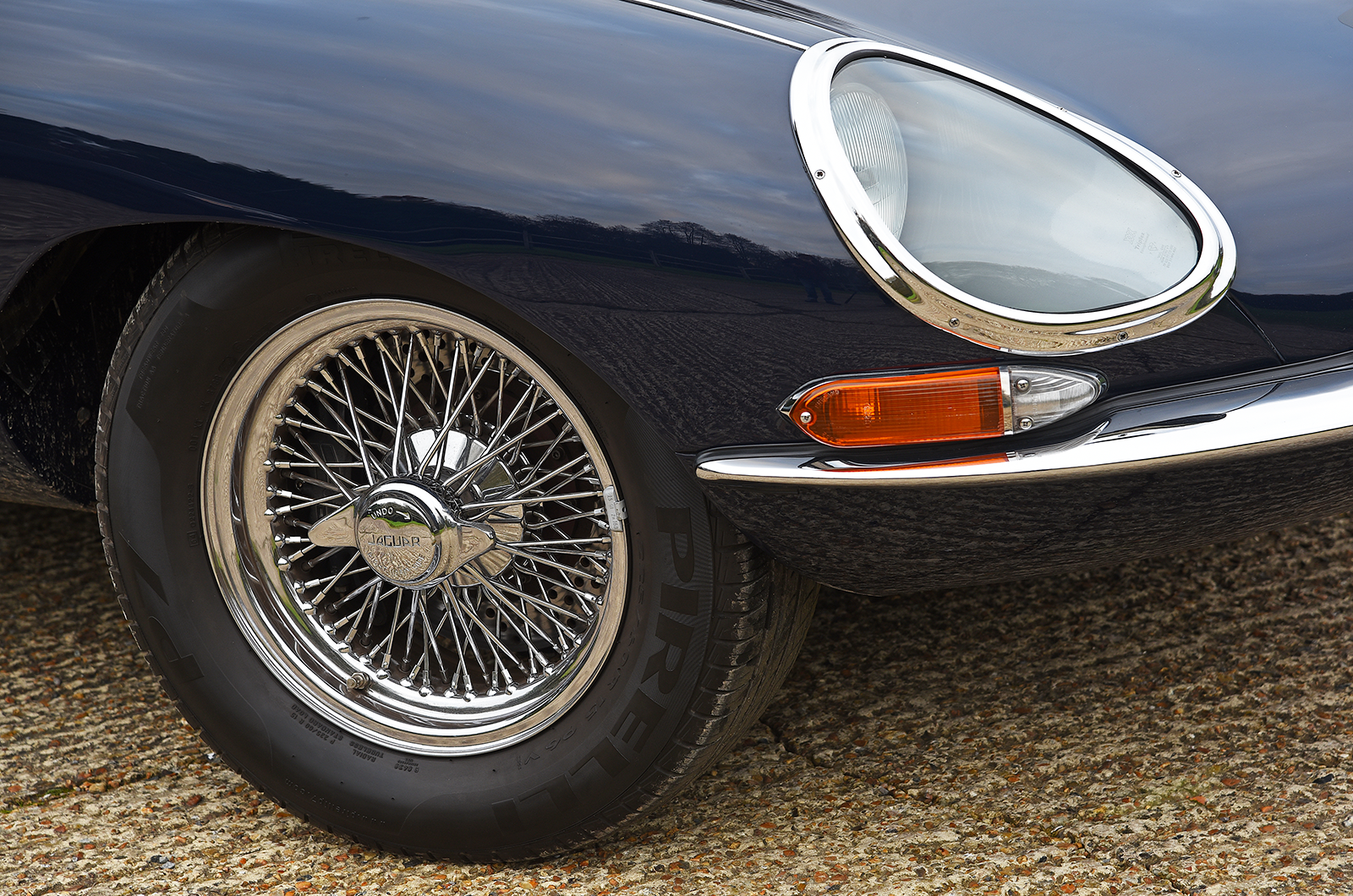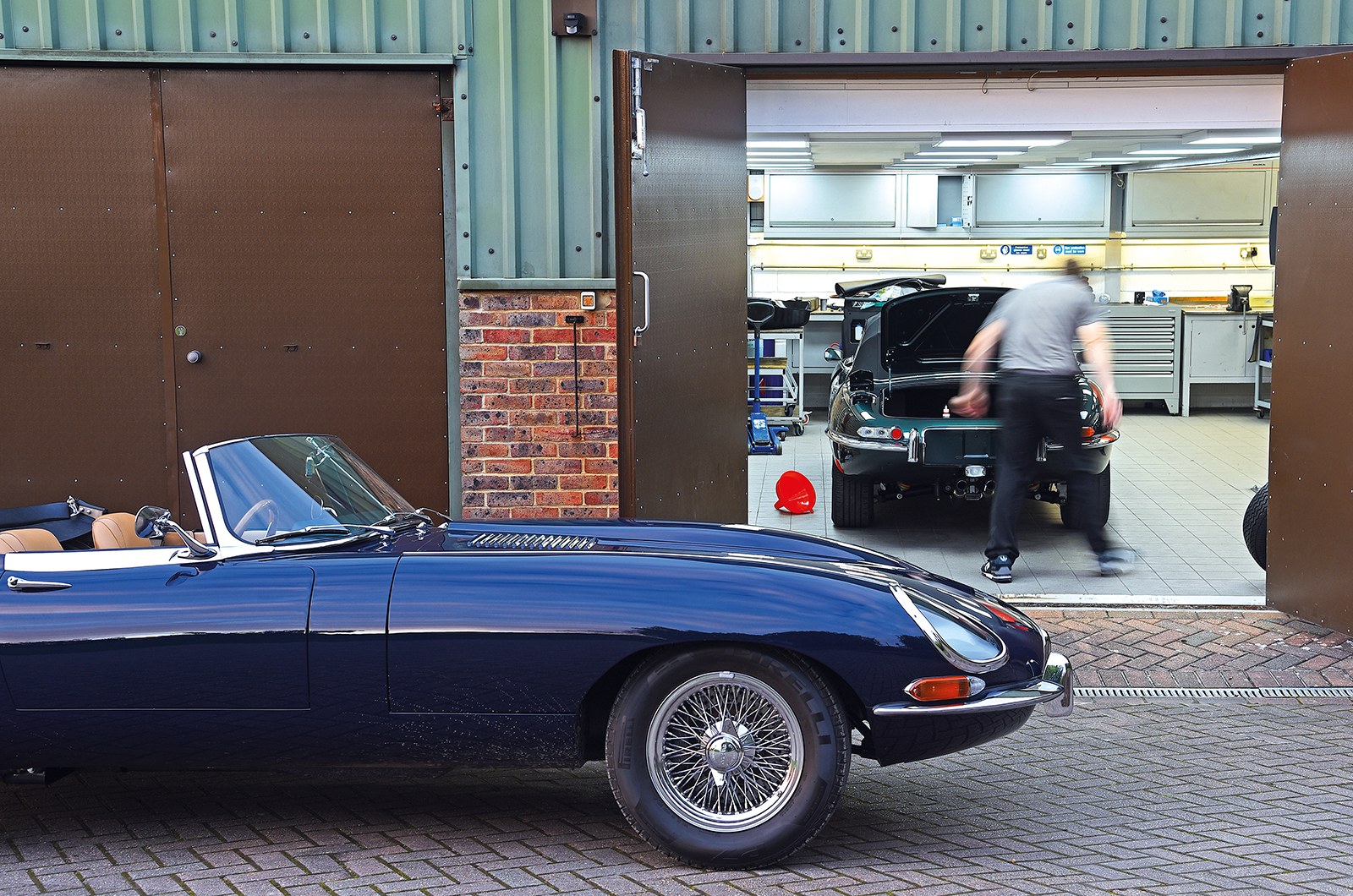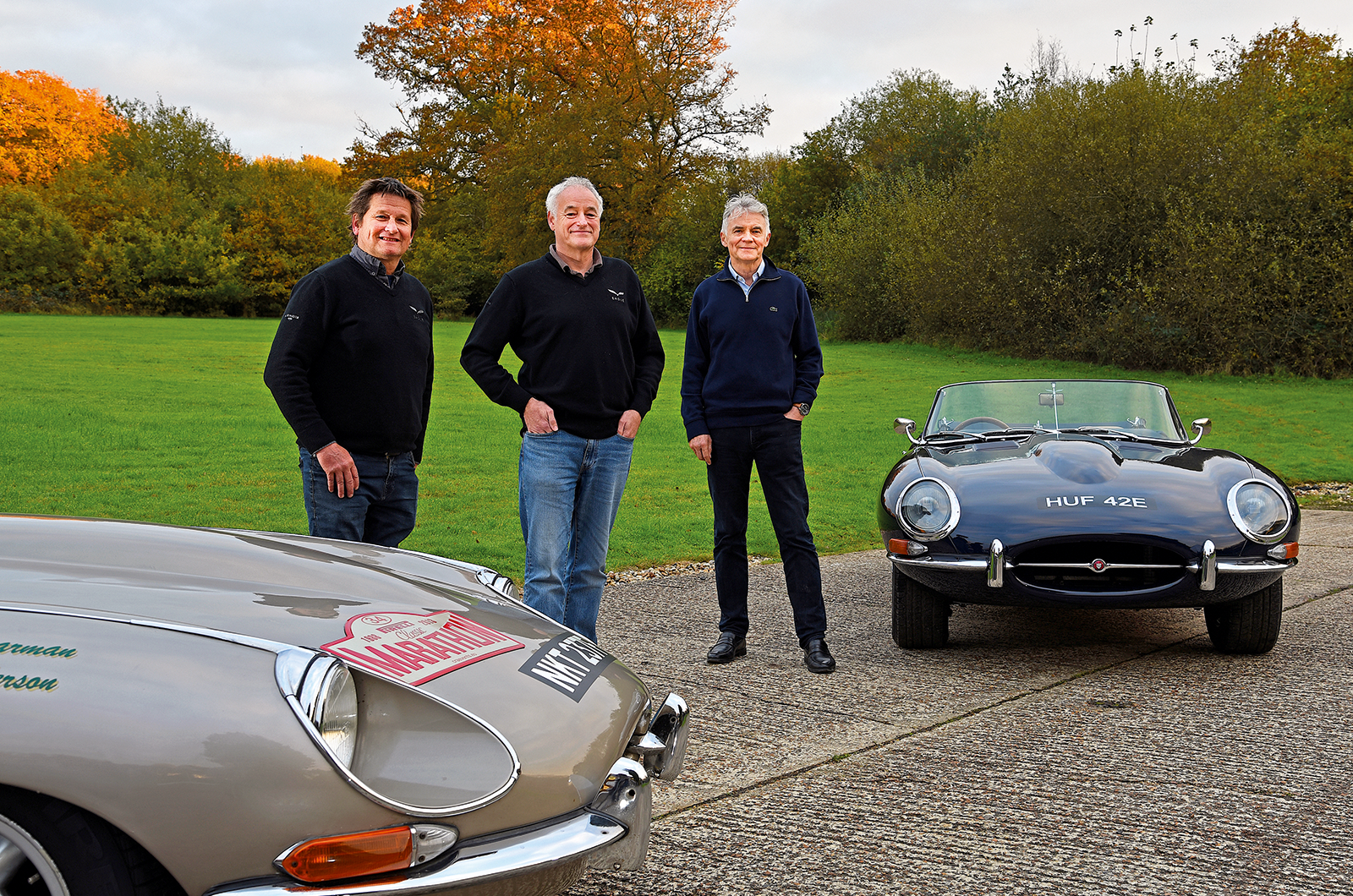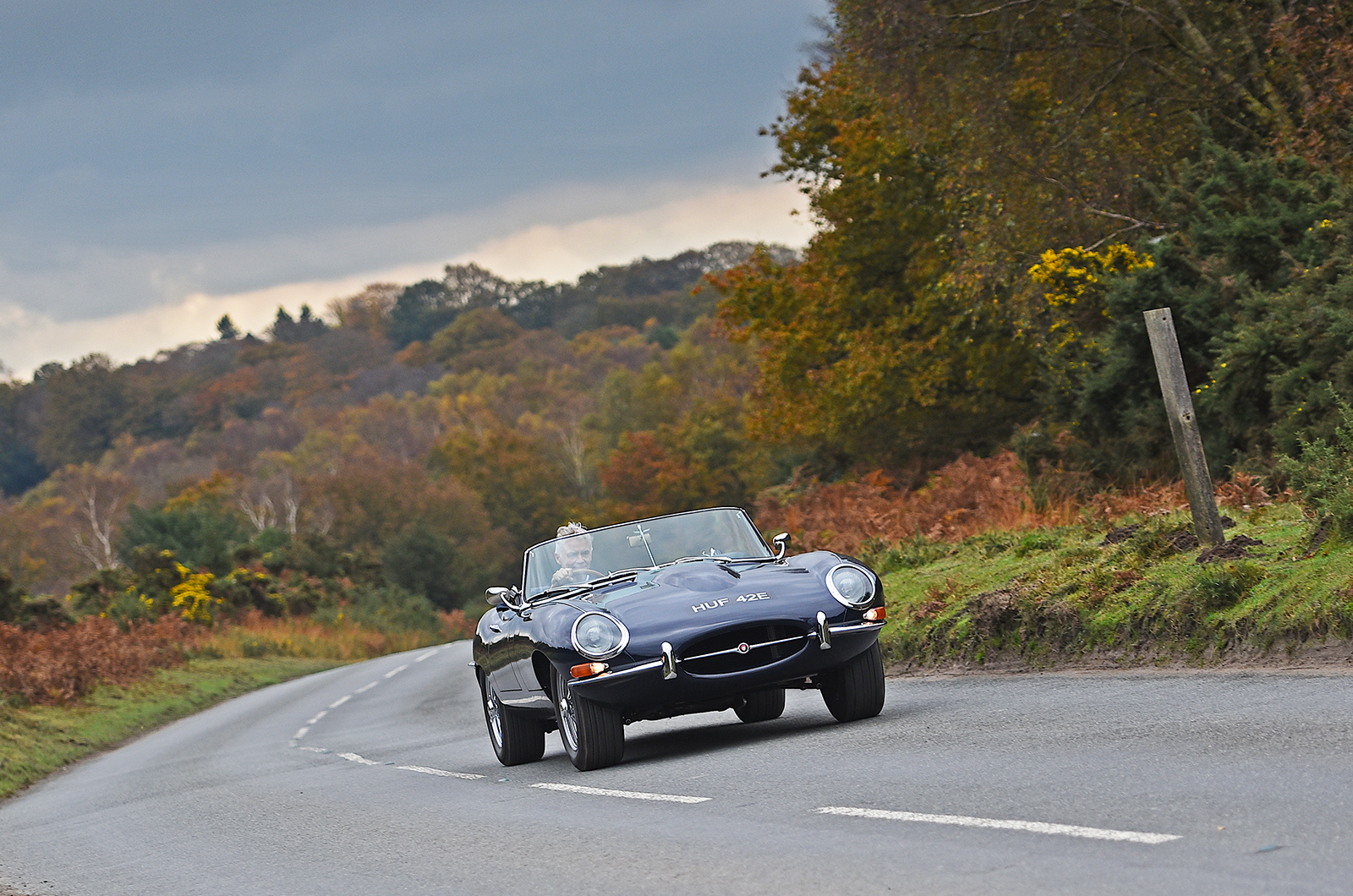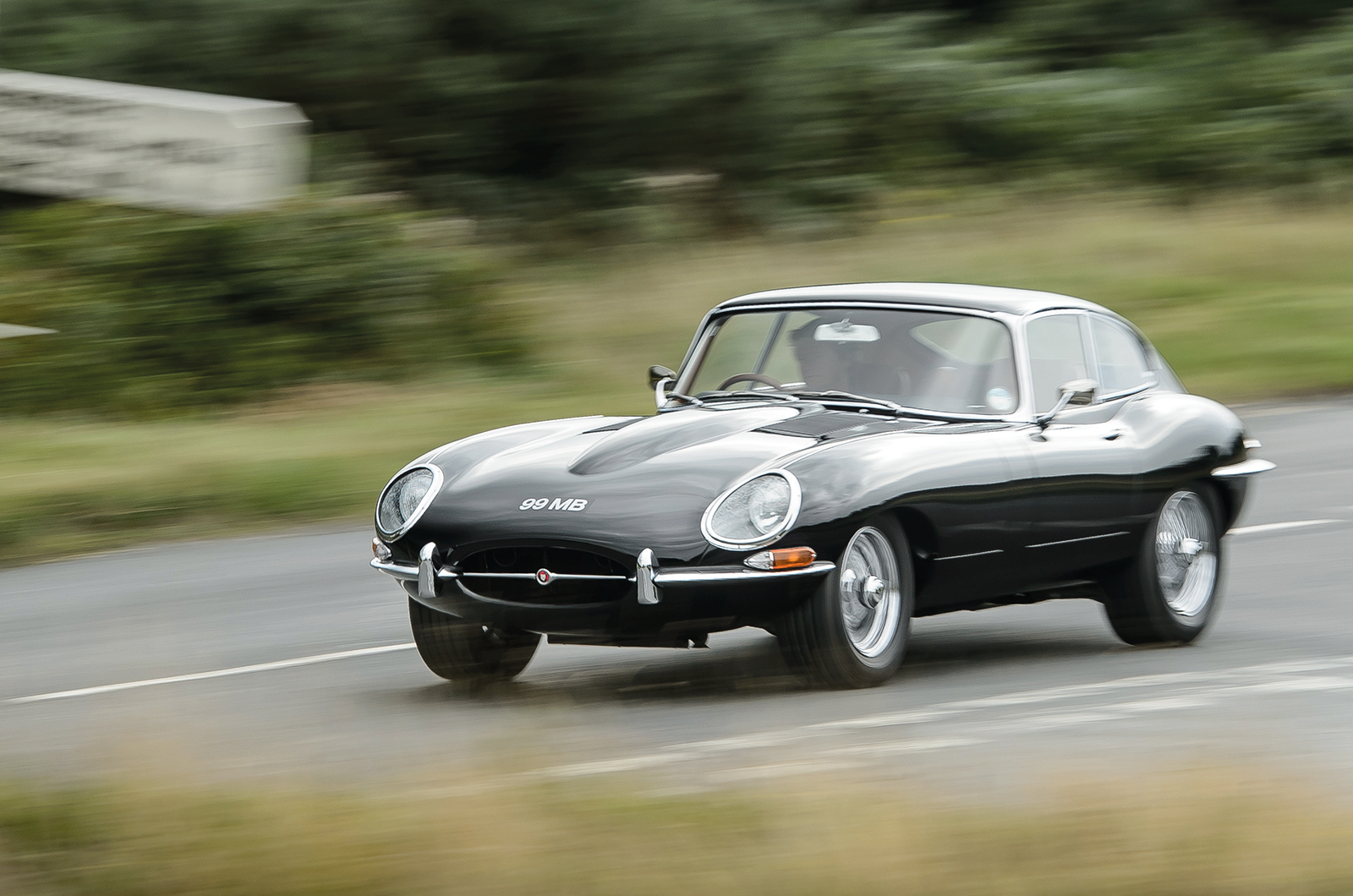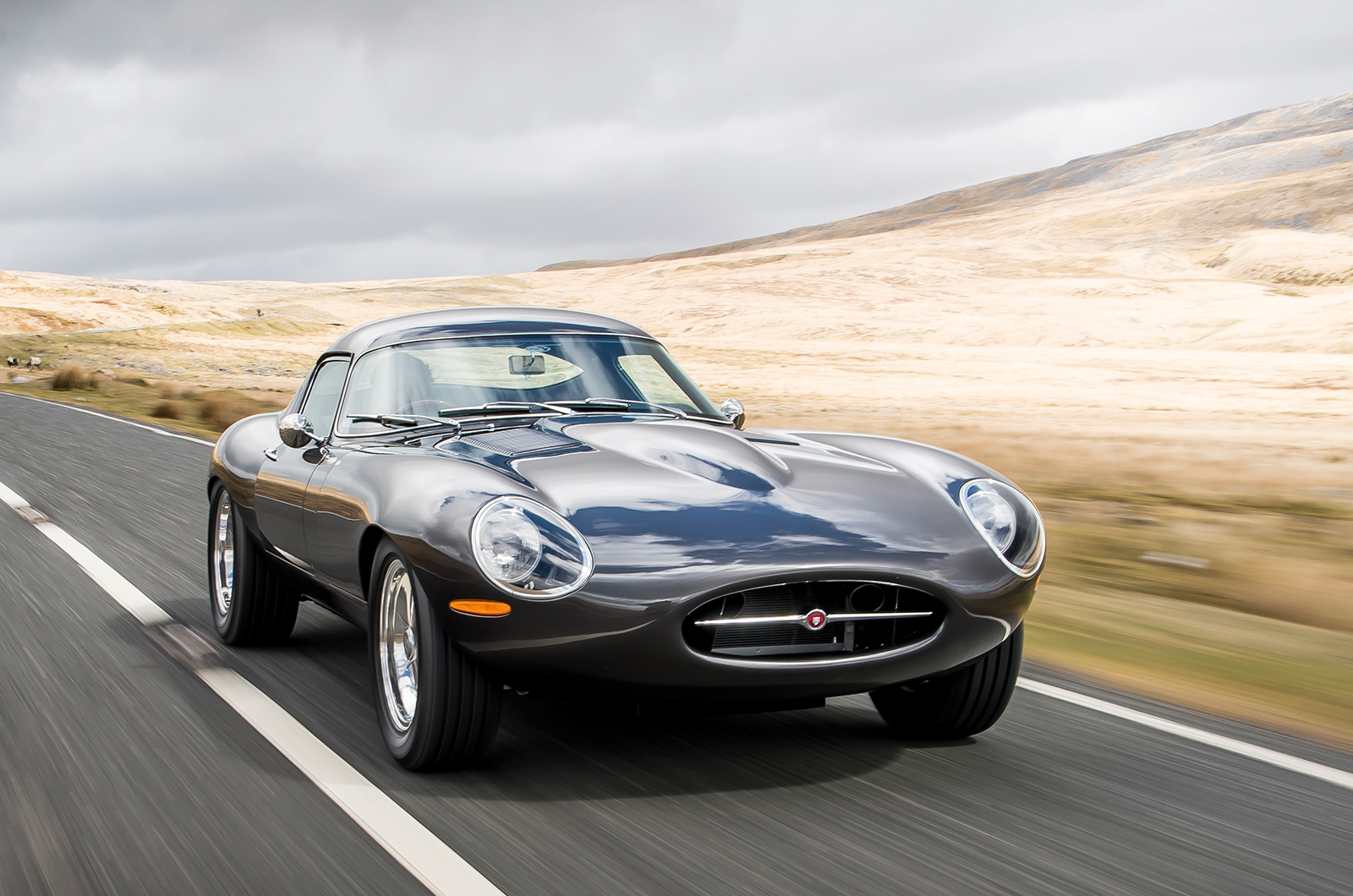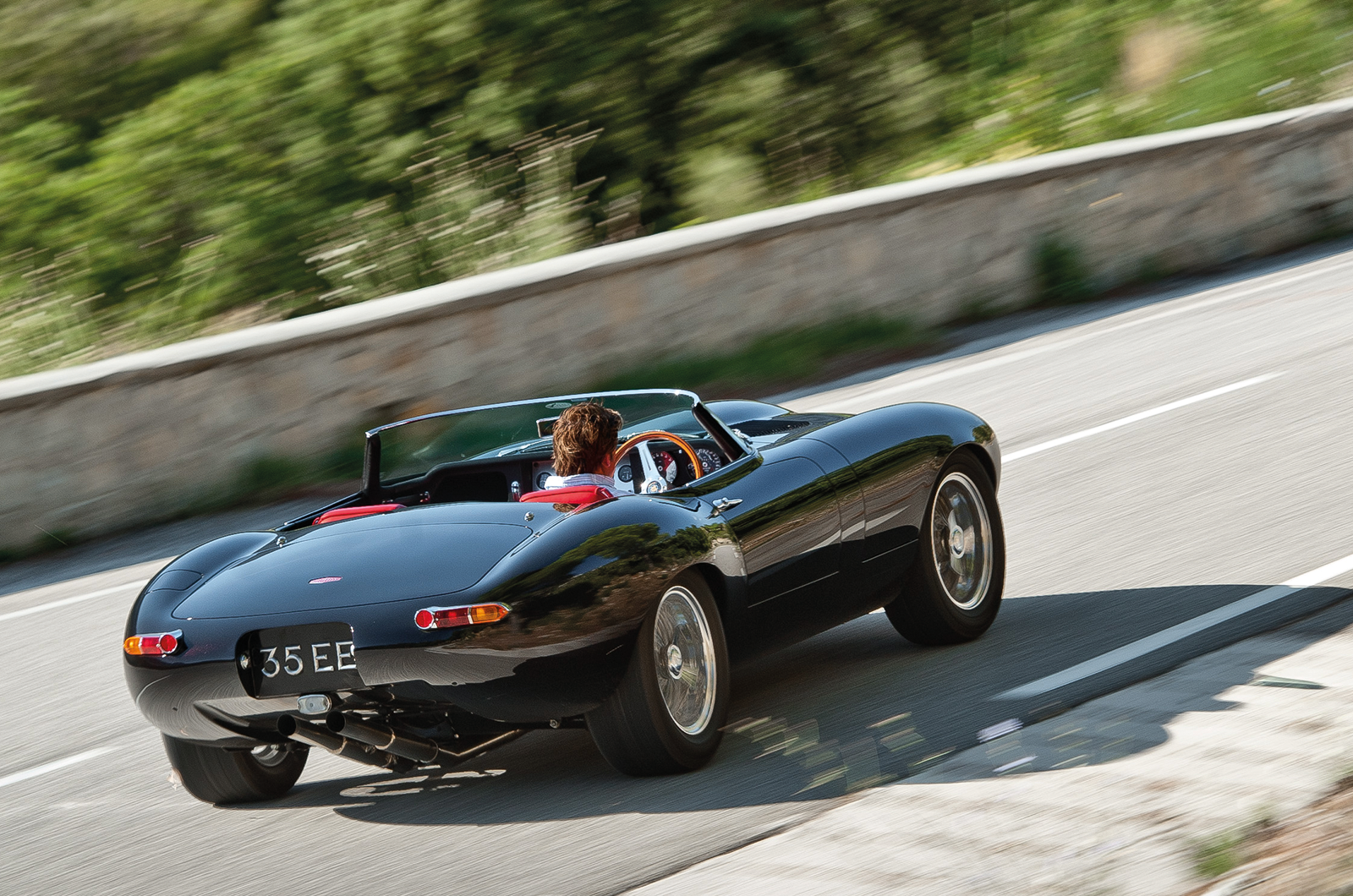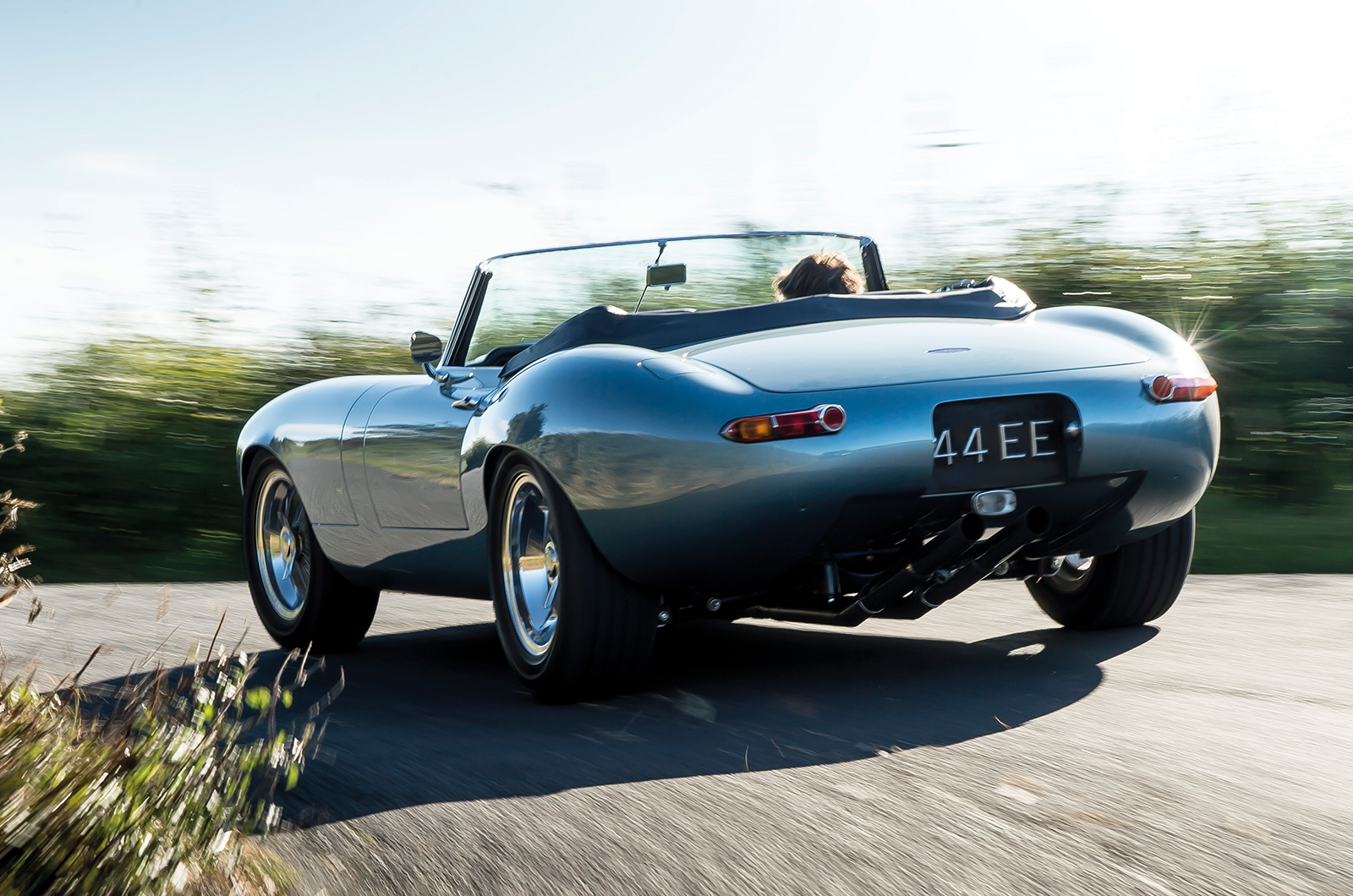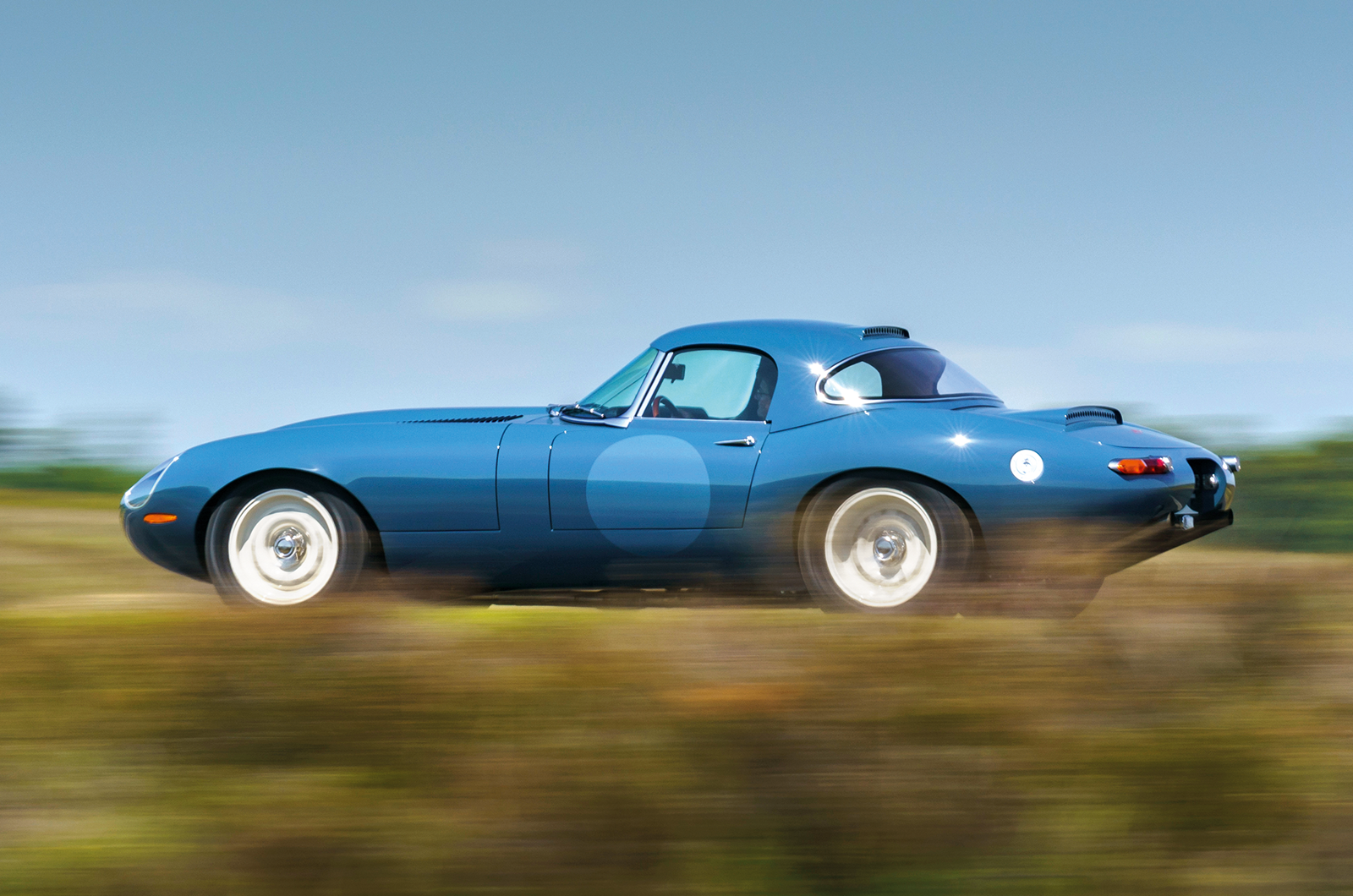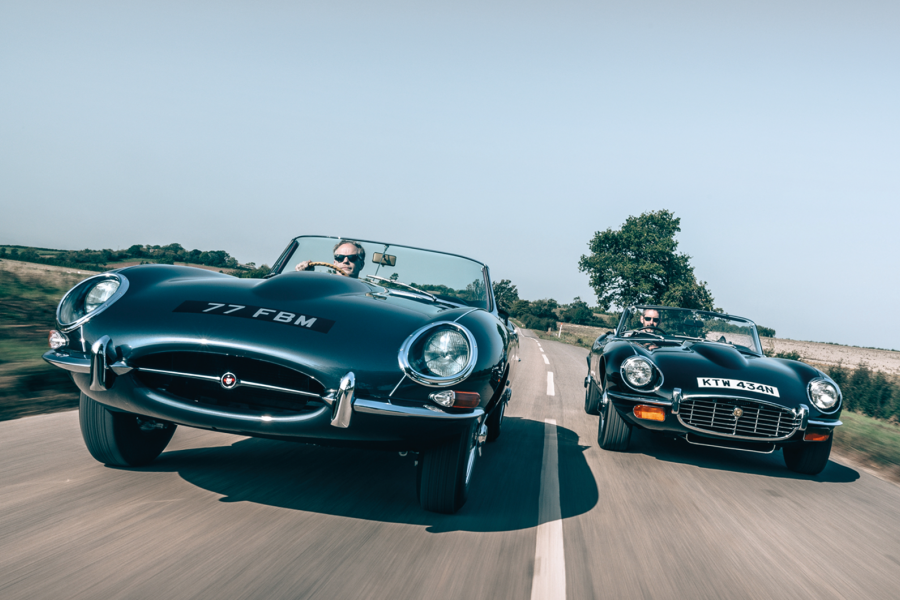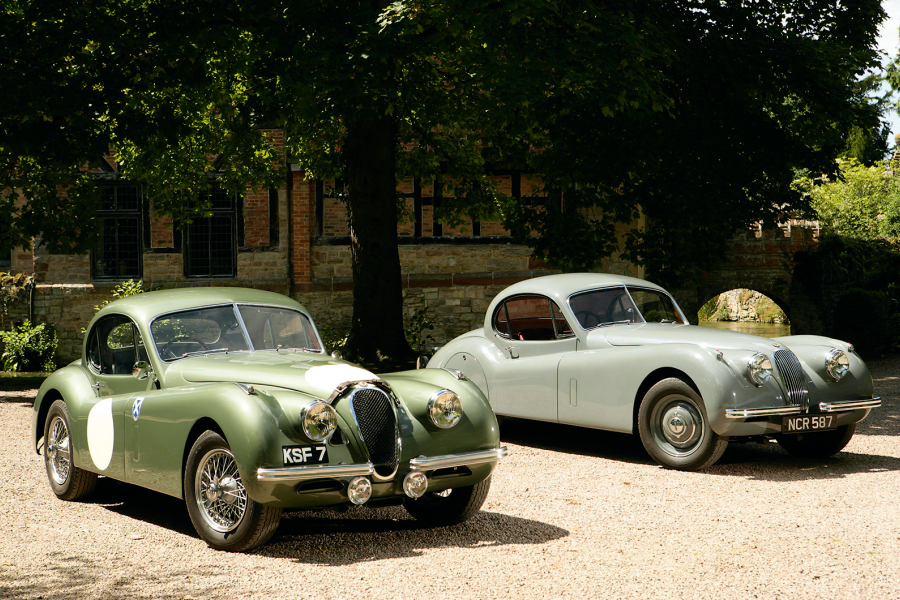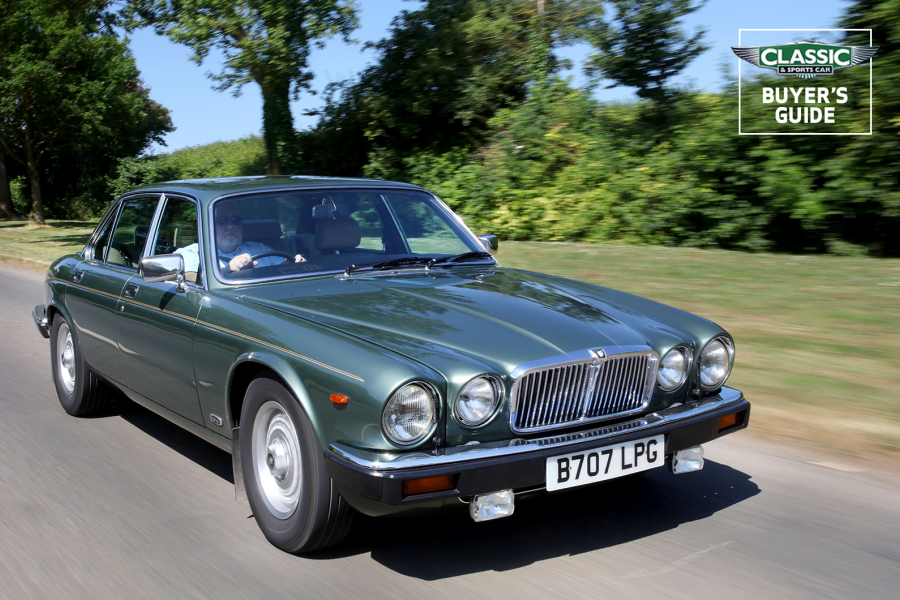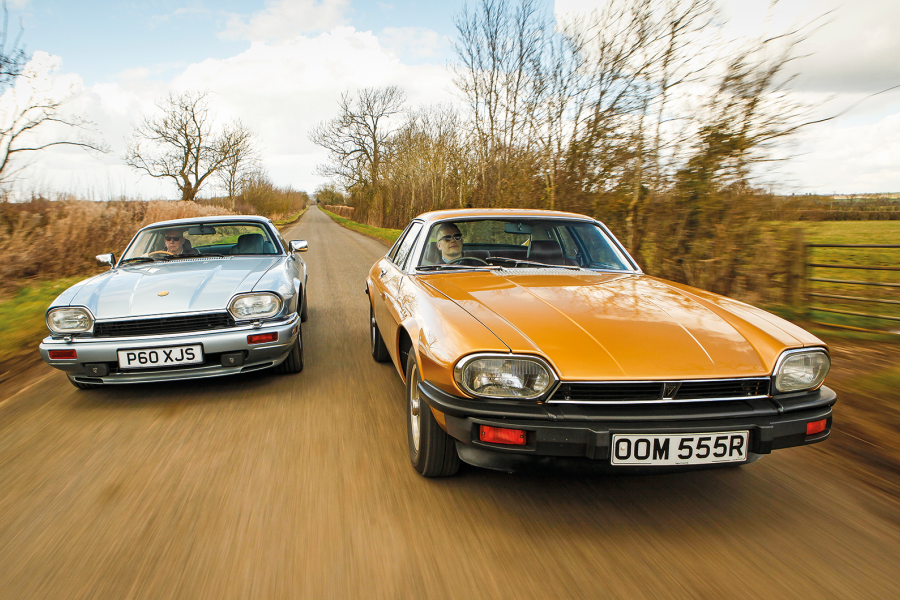Rather than trying to remedy it, Pearman took the bold decision to offer McLaren a choice of his money back (as a gesture of faith he’d paid 80% up front), or to start again with a better shell, which was HUF, that he’d been keeping for himself.
Now the rebuilds are done in-house, and arches have rolled, wired edges rather than folded lips, which consumes yet more man-hours.
The four-speed ’box shifts smoothly and the exhaust has a lovely crackle
The most obvious difference is under the rear, where the standard pressed-steel radius arms are ditched in favour of neatly fabricated tubular links that are – and here’s the biggest change – spherical-jointed at each end rather than having massive rubber bushes up front.
These rein in the wishbones more tightly and can be set up to confer a little passive rear-steer in roll, which helps to explain that sharp turn-in.
The wishbones are mounted on eccentric bushes, which allow a little negative camber – “usually, but not always, because of manufacturing tolerances,” cautions Brace – and even a degree of toe in/out adjustment.
‘The most obvious difference is under the rear, where the standard pressed-steel radius arms are ditched in favour of neatly fabricated tubular links that are spherical-jointed at each end’
At the front it’s more of the same, with a ‘Shelby drop’ on the upper wishbones (the top mounts are lowered) and slightly repositioned lower wishbone mounts, all for a bit of negative camber. The wishbones look new, but they’re refurbished originals.
To eliminate bump-steer, the rack height is reset, and Eagle’s own steering arms get the track rods where they need to be: in line with the rack and as horizontal as possible at rest.
Castor can be played with according to the customer’s taste, and, most important, the rack is solidly mounted, which massively sharpens the steering.
“On a standard car, you can see the rack moving if you turn the wheel at standstill,” Brace says, explaining that most rewarding feature of No 1, the super-communicative steering, is ‘pointier’ than the current spec. We’ve dialled it back a bit from that, because most owners want it more relaxed. But you can have what you like.”
The sports seats were developed after John McLaren slid about a lot driving in the Alps
Brakes are usually AP Racing four-pots clasping massive vented and drilled discs.
“You don’t need the biggest option unless you’re doing track days,” Brace continues. “One size down is probably best for the road. Whatever you do, the rears are going to overheat first anyway.”
Hence the carbonfibre air scoops occupying some of the room taken up by the original doughnut radius-arm mounts.
Brace explains that sometimes it’s more about convincing customers what they don’t need.
‘The steering wheel talks to you like a Porsche 911’s’
“Every customer’s needs are different,” he says. “Sometimes they want the biggest and best of everything.
“I ask what they plan to use the car for, and we take it from there. Our most popular spec at the moment is between GT and Sport.”
With all these mods, and despite those extra webs in the sills, an Eagle doesn’t have to be heavy.
“We can usually get 200-250lb out of them,” says Brace. “There’s lots you can do: magnesium sumps, diffs, even hubs, ally calipers and an aluminium block. Changing to our small lithium battery saves 10kg on its own.”
Better dampers and tyres are part of this package
Inevitably, this level of dedication, care and attention from a staff of 20 comes at a price.
The numbers look eye-watering until you break them down – each car takes more than 4000 hours to build – but Pearman is happy to elaborate.
“We have always offered all Eagle in-house restorations at a fixed price. This was one of our original unique selling points, taking away the worry and concerns on commencing a journey into the unknown where, once a car has been stripped and an original estimate often blown out the water, it is too late.”
Eagle E-types moved from Kent to East Sussex in 1993
He continues: “This is what we countered head-on with our ‘one standard, one price’ Eagle E-type restoration option.
“The current new-commission fixed price to our Eagle Classic spec is £420k [plus VAT for UK customers], which includes a decent original car, that we supply, as the basis.
“This is split into a staged payment programme. Each commission will consume in excess of 4500 hours and we need between 18 and 24 months from start to finish.”
Left-right: Paul Brace, Henry Pearman and John McLaren
And there’s more. “We then offer a fixed-price menu of in-house developed options.
“Because each car is tailored to a client’s requirements, the end costs will vary. As a guide, the Eagle GT spec is an additional £20,500, plus VAT if a UK delivery.
“On the rare occasion that a pre-owned, fully Eagle-restored, and numbered, example from, say, the ’90s comes to market, it is the entry level.
“Eagle 6 is on our website and priced at £365,000, although it was completed to be a semi-‘GT3’ style of car. John would never sell, but his car would command a significant premium over that.
“We have recently sold two pre-owned later ‘full Eagles’, similar in spec to John’s, and the selling prices ranged between £435,000 and £540,000.”
Eagle has developed new variants over the years, but Number 1 remains special – maybe, even, the original and best?
Spyder GTs and Low Drag GTs take 8000 hours, so add around 50%.
Having a laugh?
Some might think so – but they won’t have driven one. Like a tailored suit, this is potentially a car for life, so it’s worth taking the trouble to get it just right. I’d say 50 happy customers worldwide can’t be wrong.
Images: Will Williams
A spotter’s guide to Eagle E-types
E-type
The original and, for many, still the best: a 4000-hour rebuild resulting in a much-improved ‘zero-mile’ fixed-head or roadster
Low Drag GT
Begun in ’98 as the inaugural Eagle special edition, but the first ‘production’ car was handed to its new owner in 2013
Speedster
The most extreme Eagle was sketched out by Paul Brace in 2004, then completed in 2009 to a positive reception
Spyder GT
Launched in 2016, this curvy roadster blends the style of the Speedster with the practicality of a proper roof
Lightweight GT
Developed as the ultimate E-type road car and completed in lockdown, weighing just under 1000kg and with 400bhp
READ MORE
Which is the greatest Jaguar E-type of them all?
Diamonds are for ever: the Jaguar E-type at 60
The specialist: The Chevronic Centre
Paul Hardiman
Paul Hardiman is a regular contributor to – and former Deputy Editor of – Classic & Sports Car
